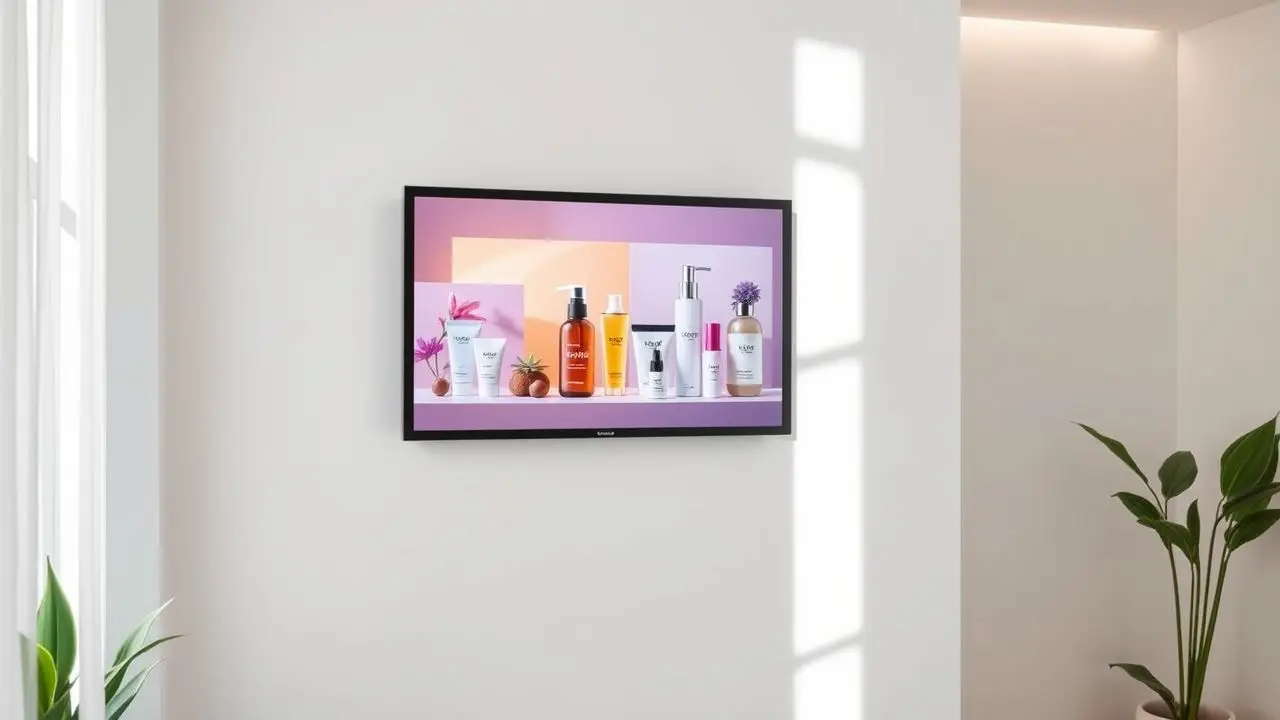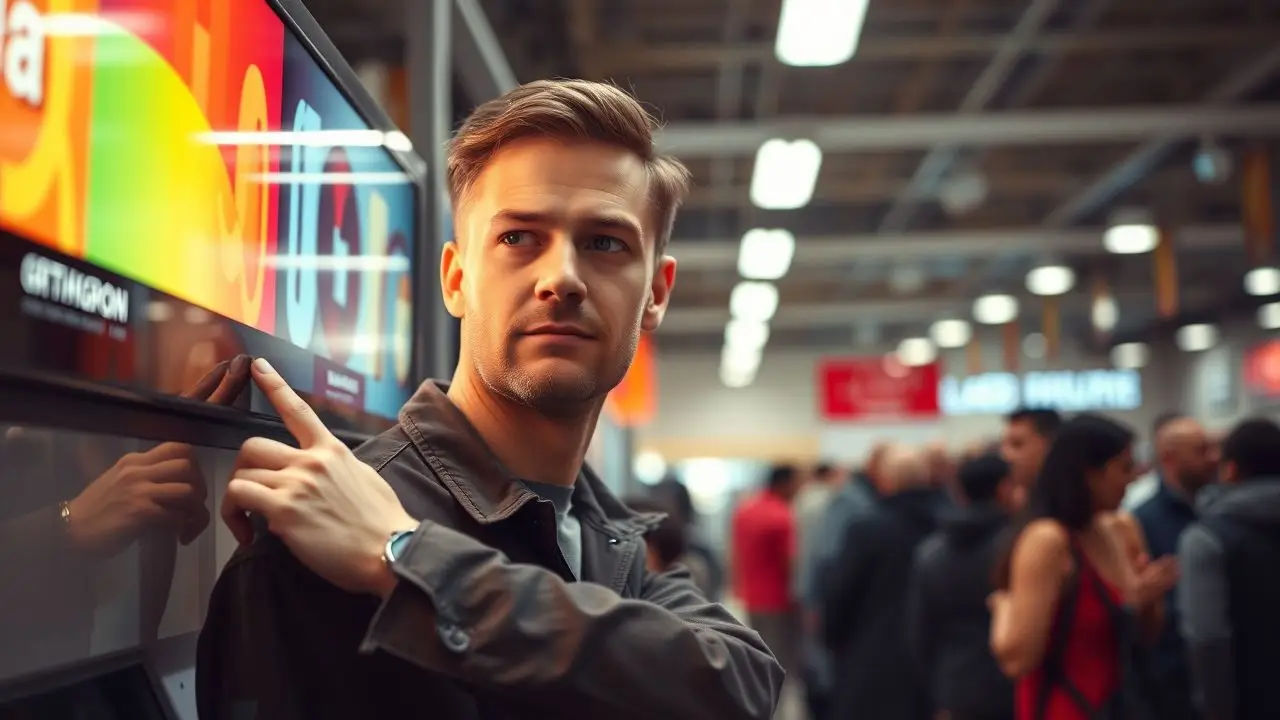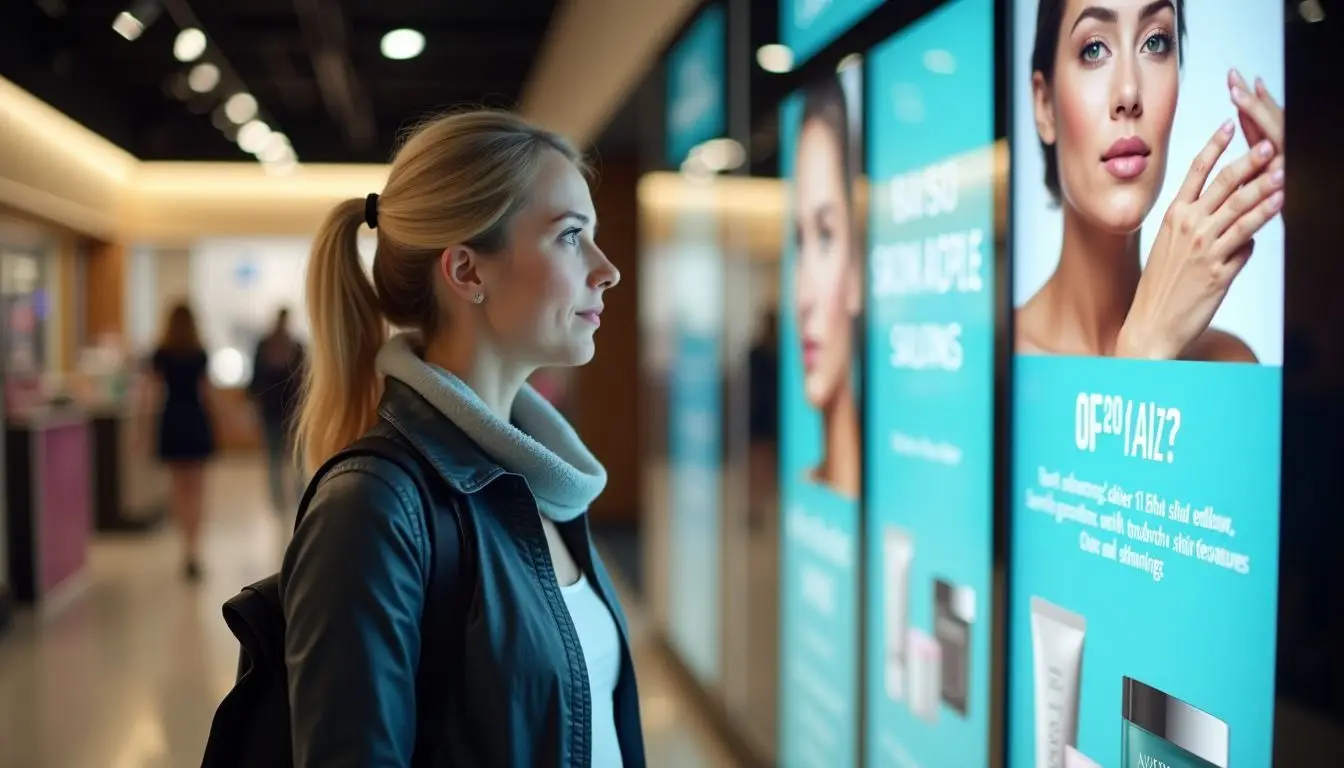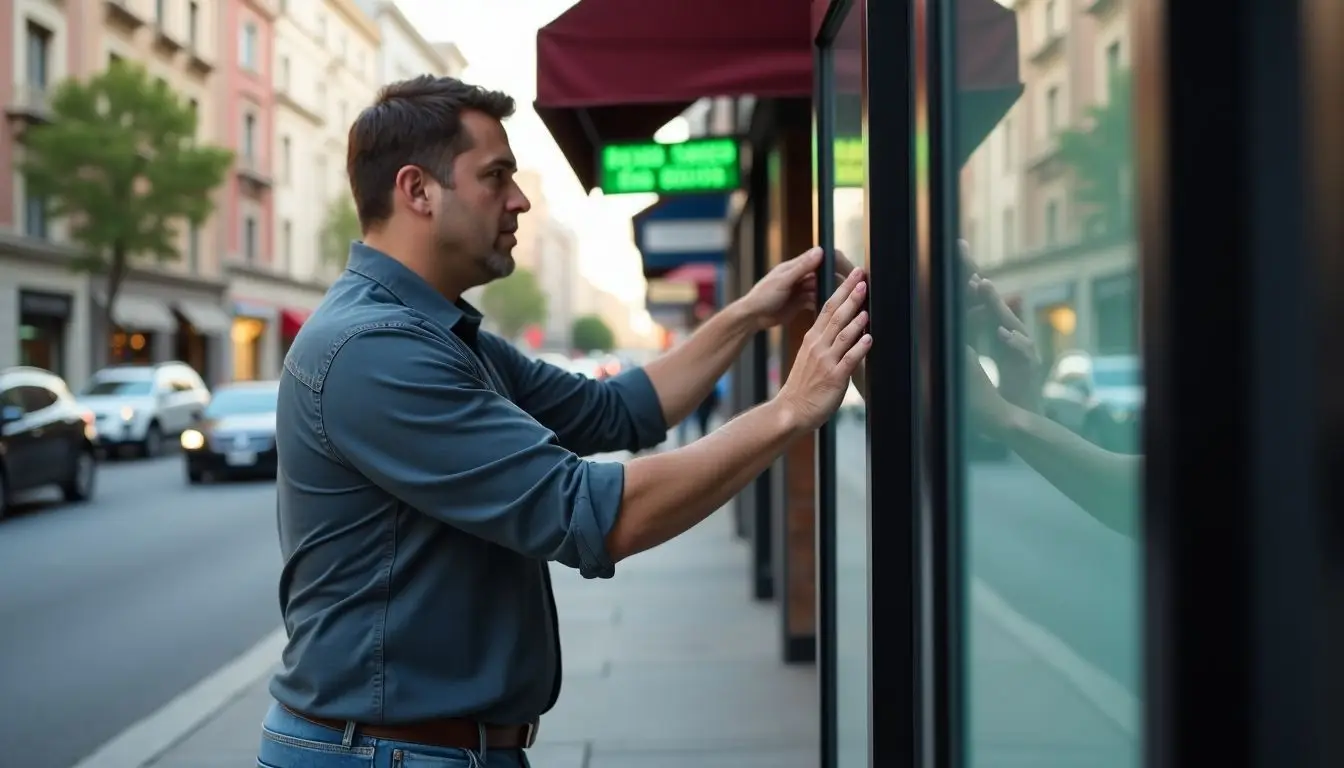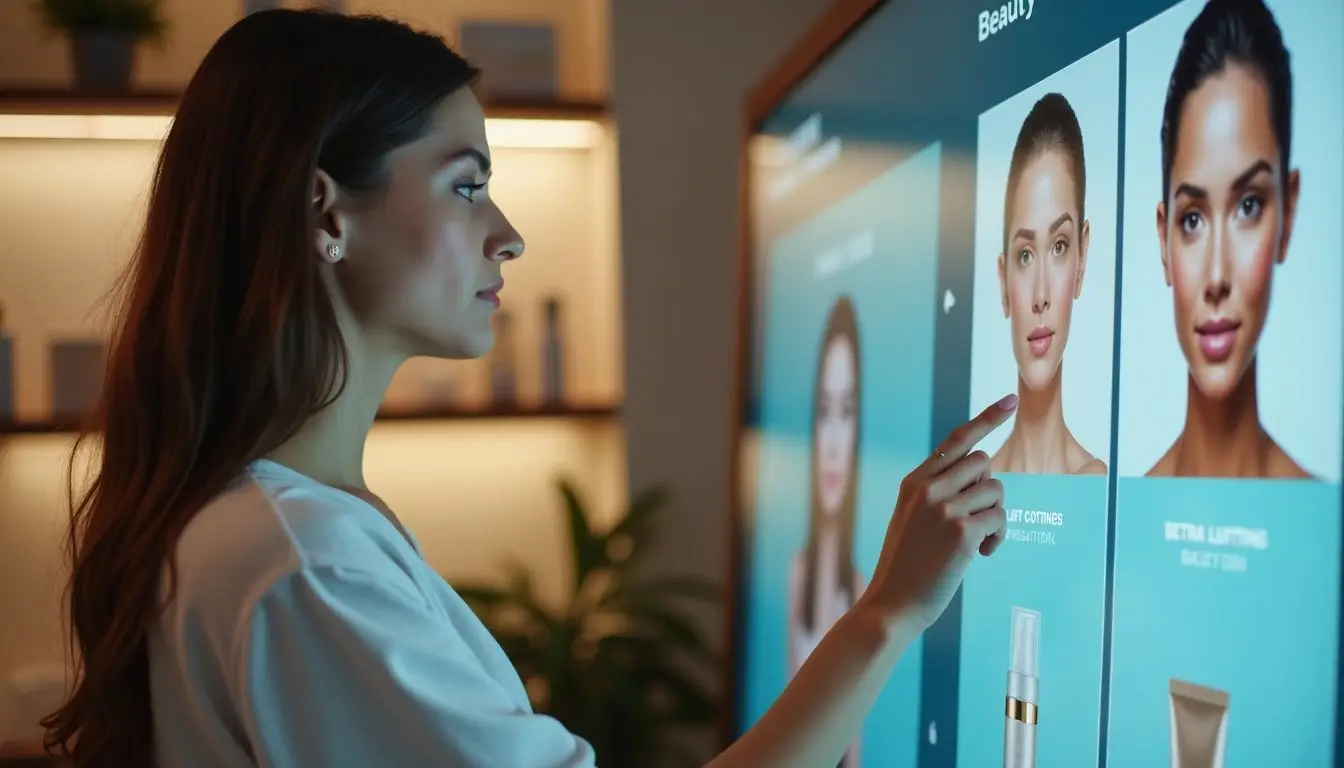You can streamline office communication and boost productivity with digital signage for real-time announcements. It offers real-time updates on company news, meeting schedules, and urgent alerts, ensuring everyone stays informed. By tailoring messages to specific departments and strategically placing screens, you’ll enhance employee engagement efficiently. Digital signage is cost-effective and scalable, providing consistent information across multiple locations. Additionally, incorporating interactive elements and highlighting achievements fosters a positive work environment. Embrace IoT and AI-driven content to stay ahead, automating tasks like room booking and personalizing messages. Discover how digital signage can transform your office environment.
Key Takeaways
- Delivers real-time updates on critical office announcements, meetings, and safety information.
- Streamlines communication by instantly displaying urgent updates customized for specific departments.
- Enhances employee engagement and productivity by ensuring timely availability of essential information.
- Uses tools for efficient management of urgent and scheduled announcements.
- Incorporates IoT integration to automate tasks like meeting room bookings and personalized announcements.
Benefits of Digital Signage
Digital signage boosts office efficiency by streamlining communication and delivering real-time updates. When you implement office digital signage, you’re tapping into a powerful tool that enhances the way information flows within your workplace. By providing instant updates on company news, meeting schedules, and safety information, you guarantee everyone stays informed without the need for time-consuming emails or printouts.
One of the standout benefits of digital signage is its cost-effectiveness. Traditional communication methods can drain both time and money, but digital displays cut down on administrative burdens and ongoing expenses. This translates to a more efficient workplace where employees can focus on their core responsibilities rather than being bogged down by outdated communication channels.
Strategic placement of digital signage plays an essential role in boosting employee engagement. Positioned in high-traffic areas, these screens can quickly capture attention, making it easier for employees to stay engaged with company updates and recognize achievements. This not only improves morale but also fosters a sense of community and belonging.
Incorporating digital signage in your office enhances overall productivity by making sure that critical information is always at your employees’ fingertips, fostering a well-informed and engaged workforce.
Effective Usage Examples
Imagine walking into the office and immediately seeing a screen that announces a critical meeting has been moved to a new time, making sure you’re always in the loop. Digital signage in the office effectively communicates important information in real-time, keeping everyone informed and engaged. With tools, you can send live messages to screens within minutes, making it easy to manage urgent updates.
Tailor announcements to specific departments or teams by using tagging and permissions. This guarantees that only the relevant audience receives the message, enhancing communication efficiency. For example, if there’s a spillage in a specific aisle, you can alert only the affected area, preventing unnecessary disruption.
Customize your message displays using RGB color pickers for visual appeal, and choose between full-screen or ticker tape styles to suit different types of announcements. This flexibility helps maintain high audience engagement by presenting information in an easily digestible format.
Best Practices
Consistently leveraging strategic content creation guarantees your digital signage captures attention and communicates effectively. To maximize impact, tailor your content to your audience’s preferences. This means understanding what resonates with your team and aligning your messages accordingly.
Incorporate interactive elements to boost engagement. Prompts for interaction, such as quick polls or feedback buttons, can transform passive viewers into active participants. This not only makes your content more engaging but also provides valuable insights into employee sentiments.
Highlighting employee achievements is another best practice. Recognizing accomplishments on digital signage fosters a positive work environment and boosts morale. When staff see their hard work acknowledged publicly, it reinforces a culture of appreciation and motivation.
Scalability is key. Your content should be easily distributable across various locations, ensuring a consistent message. This makes it simpler to update announcements and maintain relevance without extra effort.
Industry Applications
You’ll find digital signage revolutionizes industries by offering real-time updates and streamlined communication. In educational settings, it provides instant room availability, while hospitals use it to enhance scheduling efficiency. Hotels, event centers, and government agencies also benefit by managing schedules and room availability seamlessly.
Real-Time Updates
In various industries, real-time updates on digital signage play a crucial role in swiftly communicating urgent information to both staff and customers. Whether you’re managing a retail store, a healthcare facility, or a transportation hub, these updates guarantee critical announcements reach the intended audience immediately. This efficient communication method is essential for addressing situations like spillages in stores, patient alerts in hospitals, and service disruptions at transportation centers.
By implementing real-time updates, you can greatly enhance your safety measures. For instance, in retail, notifying customers and staff about a spillage can prevent accidents and maintain a secure environment. In hospitals, quick dissemination of patient alerts ensures that medical staff can respond promptly, potentially saving lives. In transportation hubs, timely updates about service disruptions help manage passenger flow and minimize confusion.
Real-time updates on digital signage not only improve operational efficiency but also increase customer satisfaction. When people receive timely and accurate information, they feel more informed and valued. This approach leads to better overall management of unexpected situations, guaranteeing that your operations run smoothly and your audience remains well-informed at all times.
Streamlined Communication
Building on the benefits of real-time updates, digital signage streamlines communication across various industries by efficiently managing and disseminating critical information. In corporate settings, digital signage is indispensable for managing meeting room availability. You can instantly see which rooms are free, booked, or soon to be available, making your meeting planning more efficient and reducing scheduling conflicts.
In educational institutions, digital signage provides real-time information on room availability, ensuring students and staff can quickly locate open spaces. This enhances overall efficiency and keeps everyone informed. Hospitals benefit immensely by using digital signage to streamline scheduling for medical staff and patients. Real-time information updates help manage wait times and appointment schedules, contributing to smoother operations.
Hotels and event centers rely on digital signage for managing event schedules. Guests receive timely updates, ensuring they’re always in the right place at the right time. Government agencies also find digital signage invaluable for displaying meeting room availability, which improves communication and coordination among staff.
Overcoming Challenges

Successfully implementing digital signage for office announcements requires addressing several key challenges, including setup expenses, technical hurdles, and staff education. Overcoming these obstacles is vital to enhance communication efficiency and workplace engagement.
To begin with, high setup expenses can be intimidating. Investing in quality digital signage hardware and software might seem costly initially, but the long-term benefits outweigh these expenses. Compatibility with your existing systems is another challenge. Confirm that your new digital signage integrates seamlessly with current tools and platforms to avoid disruptions.
| Challenge | Solution |
|---|---|
| Setup Costs | Financial planning and phased implementation |
| Technical Issues | Regular upkeep and expert guidance |
| Staff Training | In-depth training programs |
Technical issues, such as software glitches or hardware malfunctions, can disrupt your communication flow. Regular maintenance and having a dependable tech support team can alleviate these issues.
Lastly, staff training is essential. Your team needs to know how to use the digital signage effectively. Conduct thorough training sessions to ensure everyone is comfortable with the new system.
Future Trends
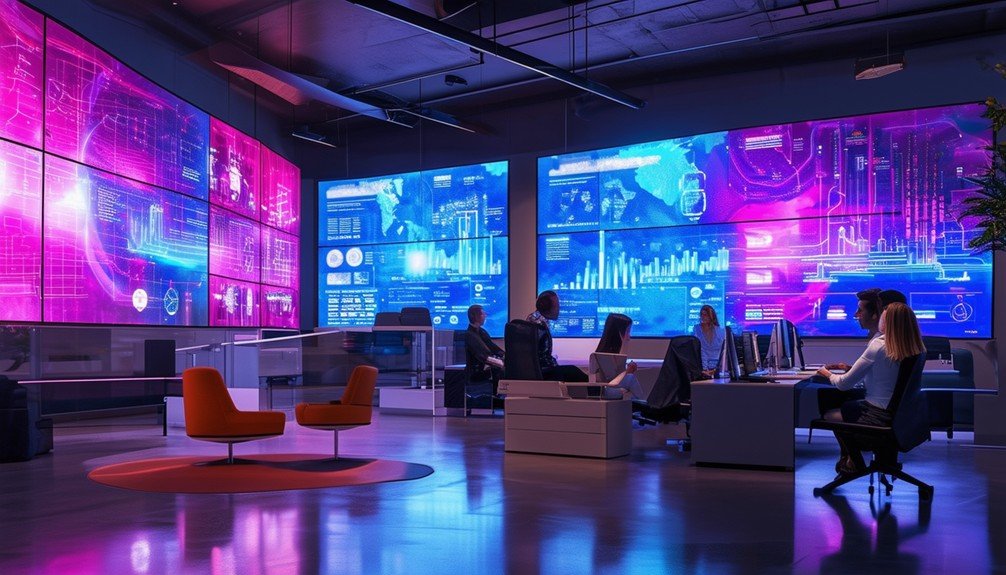
As you look to the future of office digital signage, IoT integration and AI-driven content will play pivotal roles. These technologies will automate tasks like booking rooms and tailoring announcements to individual preferences, enhancing efficiency and engagement. Embracing these innovations will guarantee your office stays ahead of the curve.
IoT Integration Benefits
IoT integration in digital signage promises to revolutionize office environments by automating tasks, delivering personalized content, and providing real-time analytics. Imagine walking into your office and having meeting rooms automatically booked through IoT-enabled digital signage. This not only increases efficiency but also eliminates scheduling conflicts, making the process seamless.
With IoT integration, digital signage can deliver personalized content tailored to employees’ needs and interests, enhancing communication and engagement. No more generic messages—each piece of information can be customized for maximum relevance and impact.
AI-powered analytics play an essential role in this setup, offering valuable insights into how employees interact with the displayed content. You’ll be able to measure engagement levels and content effectiveness, allowing for data-driven decisions to improve internal communications.
Additionally, IoT integration supports sustainability initiatives by optimizing energy consumption. Smart sensors can adjust the brightness and operational hours of digital signage, contributing to eco-friendly practices.
The future of digital signage lies in this seamless IoT integration, providing enhanced interactivity, real-time updates, and personalized user experiences. By embracing these advancements, your office can become more efficient, engaging, and sustainable.
AI-Driven Content
Leveraging AI-driven content for digital signage lets you tailor messages to your audience’s preferences in real-time, boosting engagement and relevance. By analyzing audience behavior and utilizing real-time data, AI-driven content personalizes content delivery, ensuring your messages resonate effectively. This technology automates the creation, scheduling, and optimization of content, adapting swiftly to changing trends and interests.
Imagine your digital signage displaying different messages based on who’s viewing. AI can detect audience demographics and adjust content instantly, keeping it fresh and impactful. This dynamic communication method is pivotal in maintaining high engagement levels.
| Benefit | Description |
|---|---|
| Personalization | Tailors messages to audience preferences |
| Real-Time Adaptability | Adjusts content based on real-time data |
| Automated Optimization | Streamlines content creation and scheduling |
| Trend Responsiveness | Adapts to changing audience interests |
| Enhanced Engagement | Increases relevance and viewer interaction |
Conclusion
You’ve seen how digital signage transforms office announcements by boosting engagement and ensuring timely communication. By adopting best practices and learning from real-world examples, you can overcome common challenges and maximize its benefits. Industries are already reaping the rewards, and future trends promise even more innovation. So, why not explore this dynamic tool? Embracing digital signage could be the game-changer your office communication strategy needs. Immerse yourself and see the difference for yourself!
Frequently Asked Questions
What Is Digital Signage for Announcements?
Digital signage for announcements lets you display real-time or scheduled messages on screens. You can quickly share important updates, customize displays, and pre-schedule messages, all through an intuitive interface that guarantees efficient communication management.
How Can Digital Signage Help Your Business?
Digital signage can boost your business by enhancing communication, increasing message retention, and improving customer satisfaction. You’ll see better employee engagement and morale, leading to a more efficient workplace and potentially higher sales.
How Effective Is Digital Signage?
You’ll find digital signage incredibly effective. It increases message retention by 83%, boosts sales by up to 33%, and catches 63% more attention than static displays. Plus, 74% of customers are more likely to engage with content.
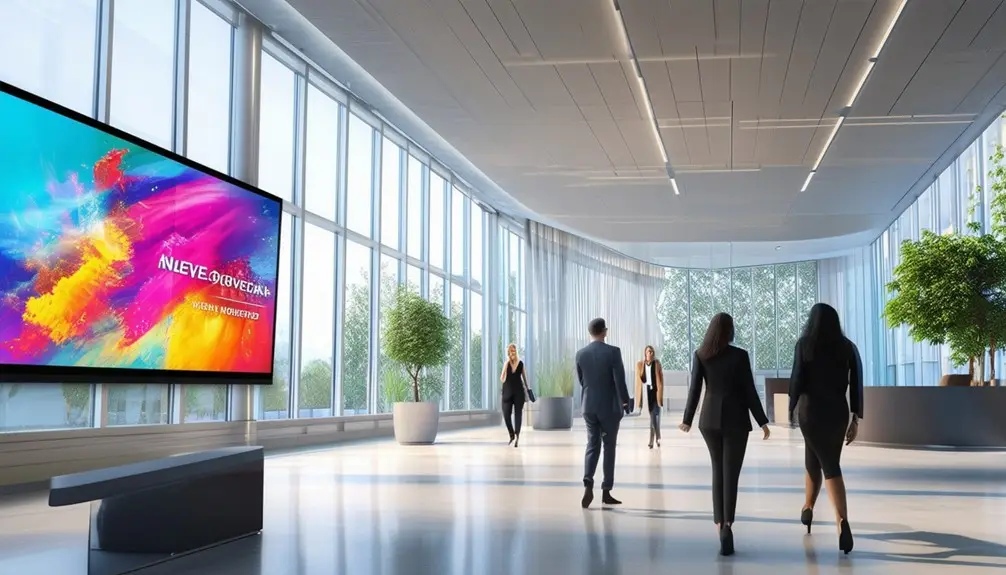


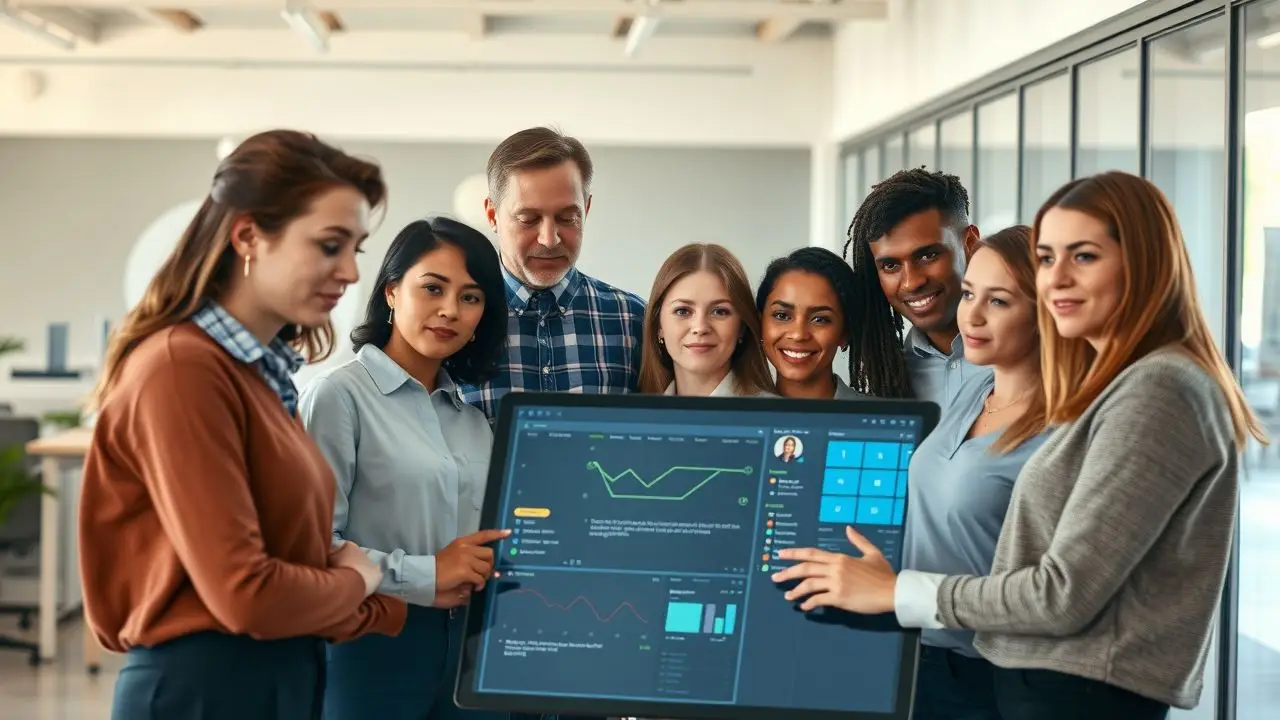
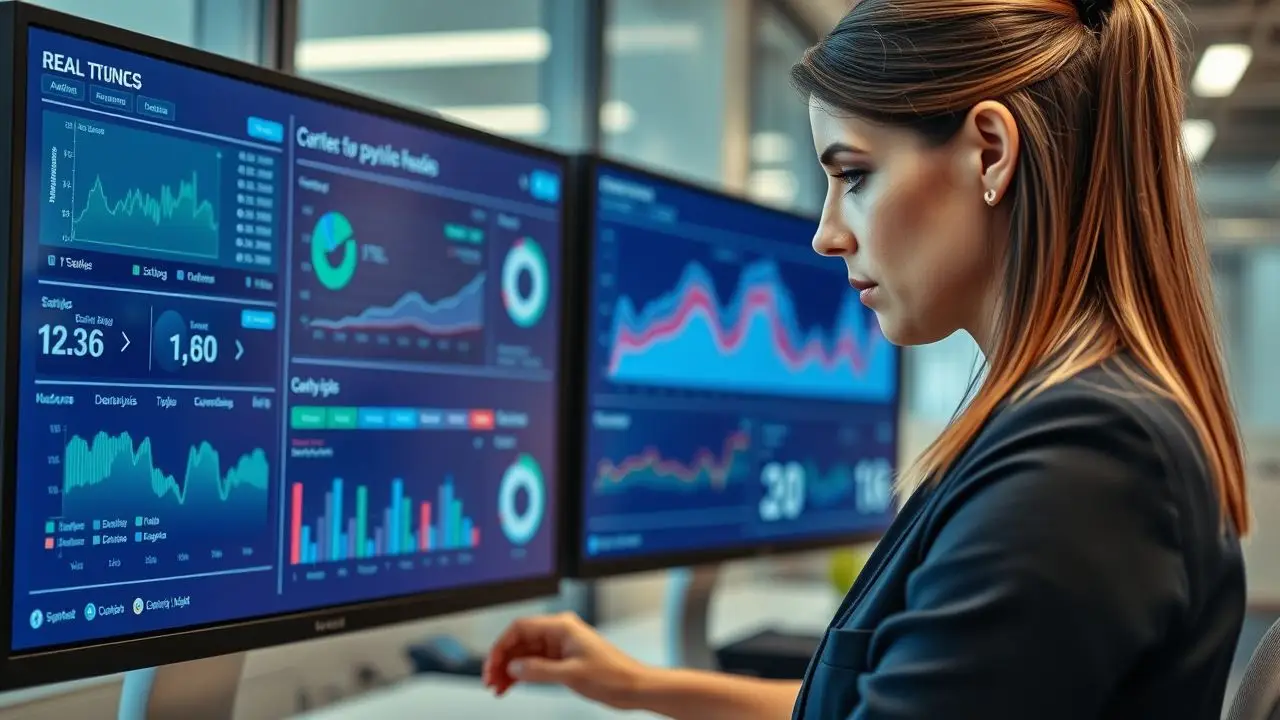

 Cloud-powered systems are changing how companies use digital signage. These systems store and manage content online. Businesses can update their displays from anywhere with internet access.
Cloud-powered systems are changing how companies use digital signage. These systems store and manage content online. Businesses can update their displays from anywhere with internet access.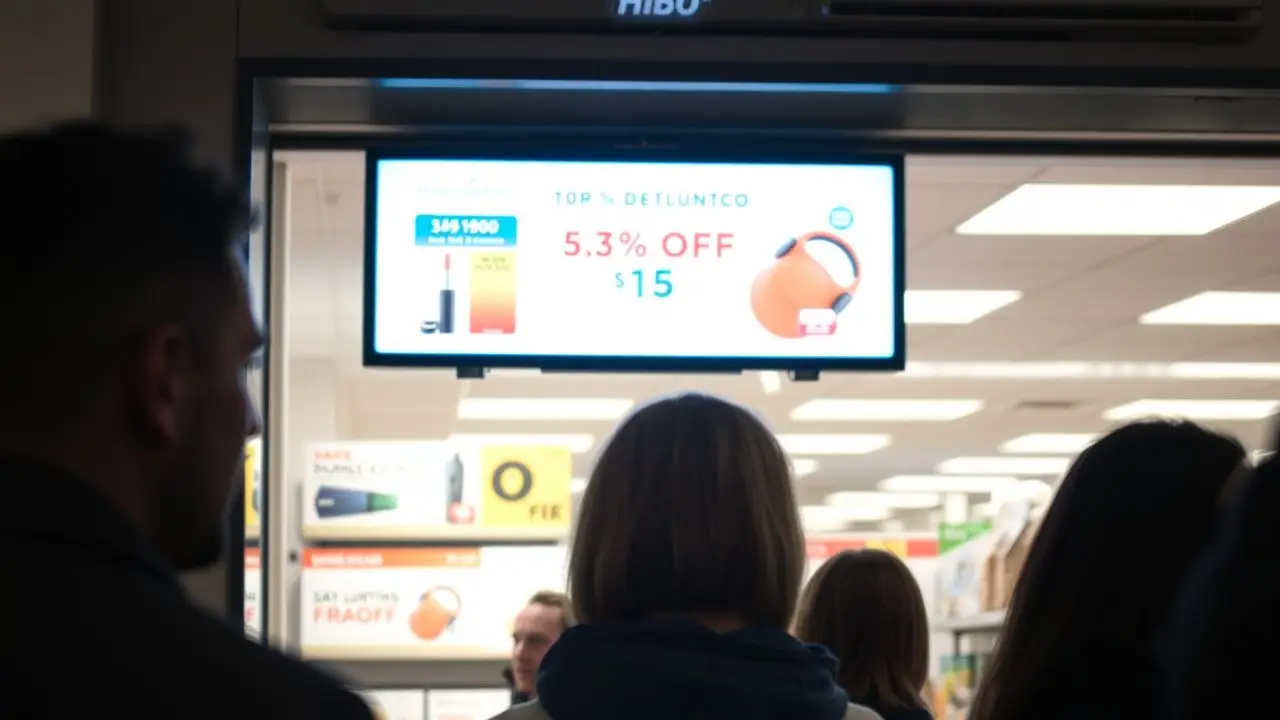

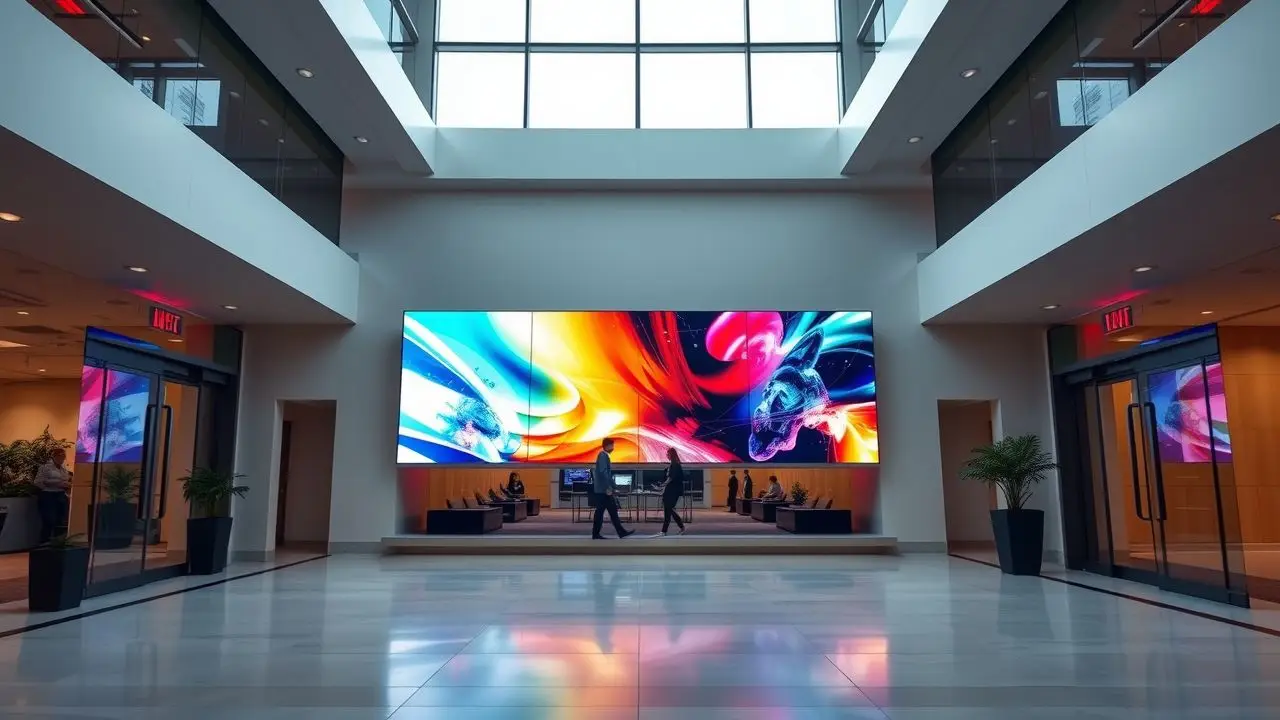

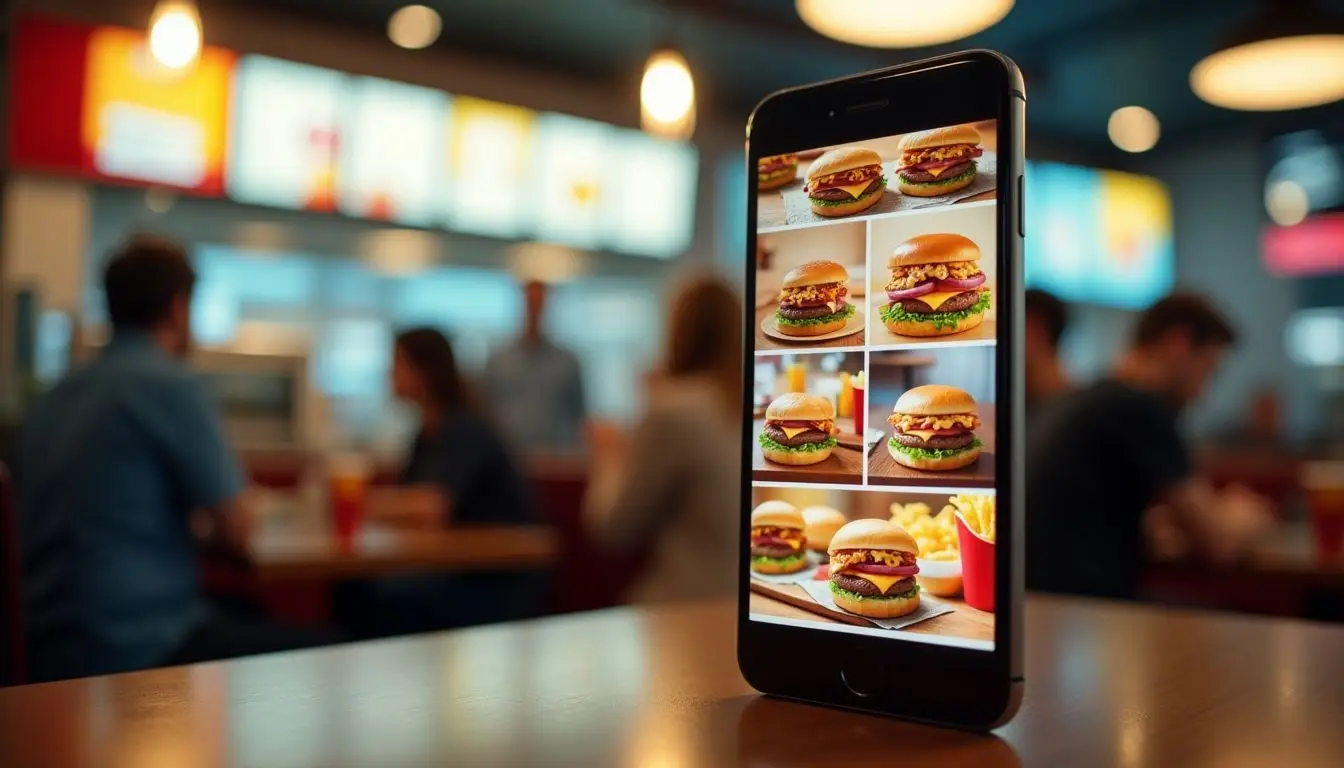
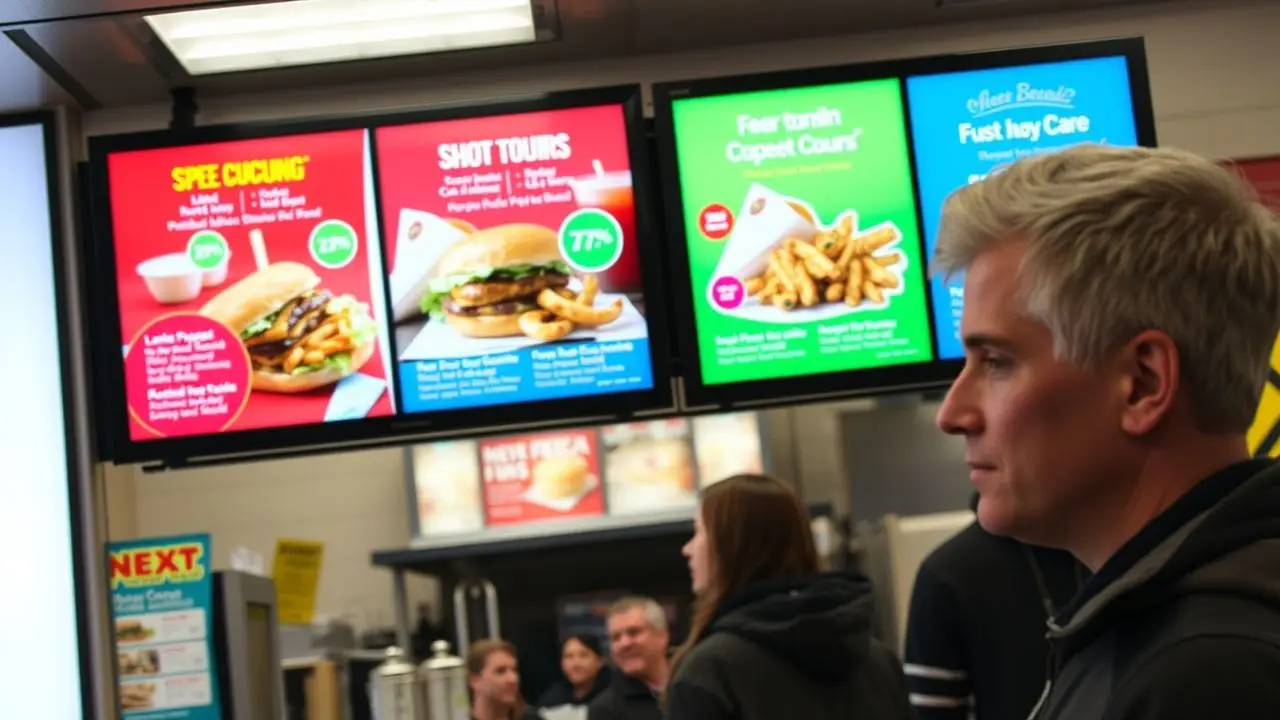
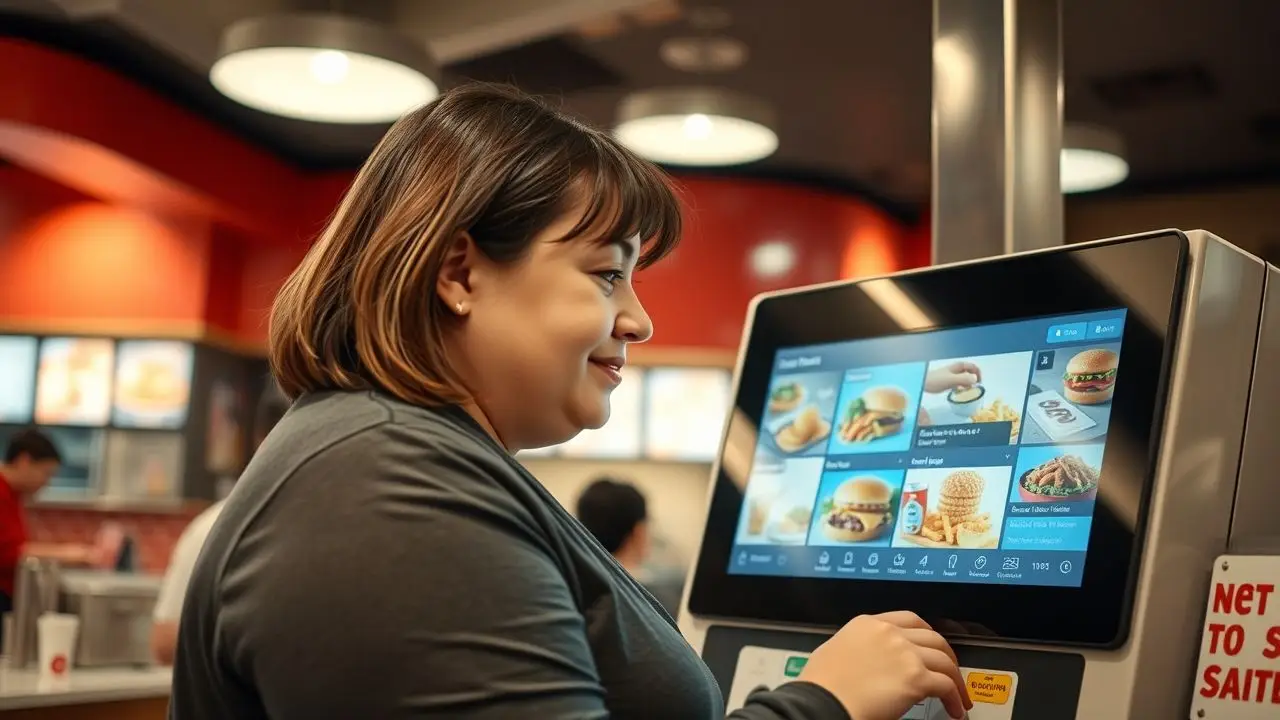
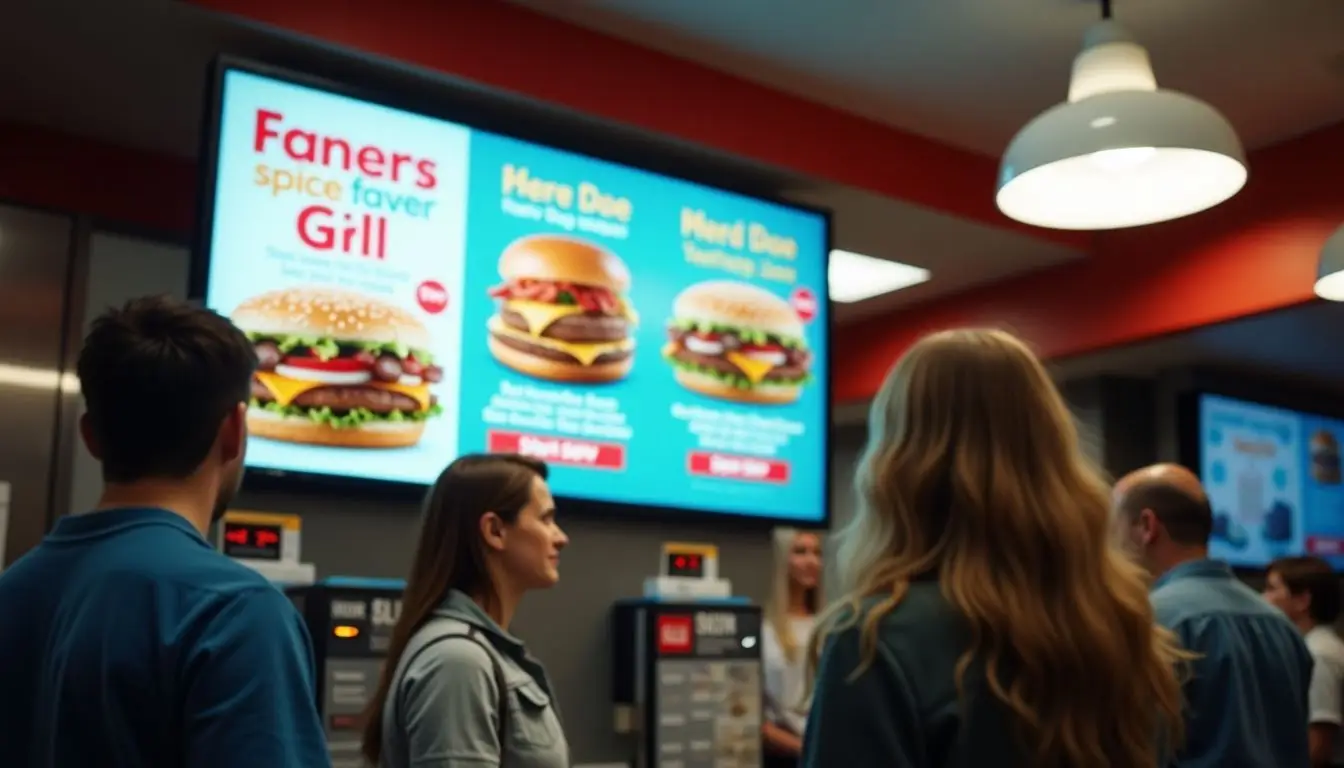
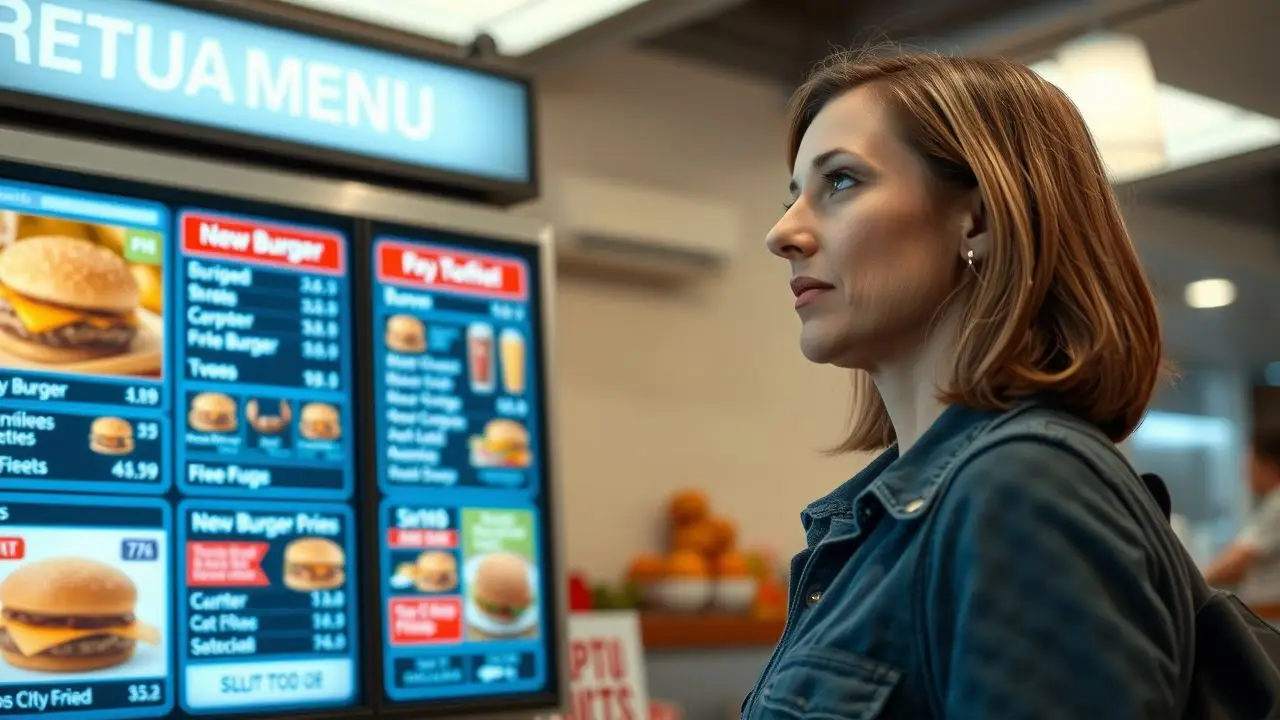
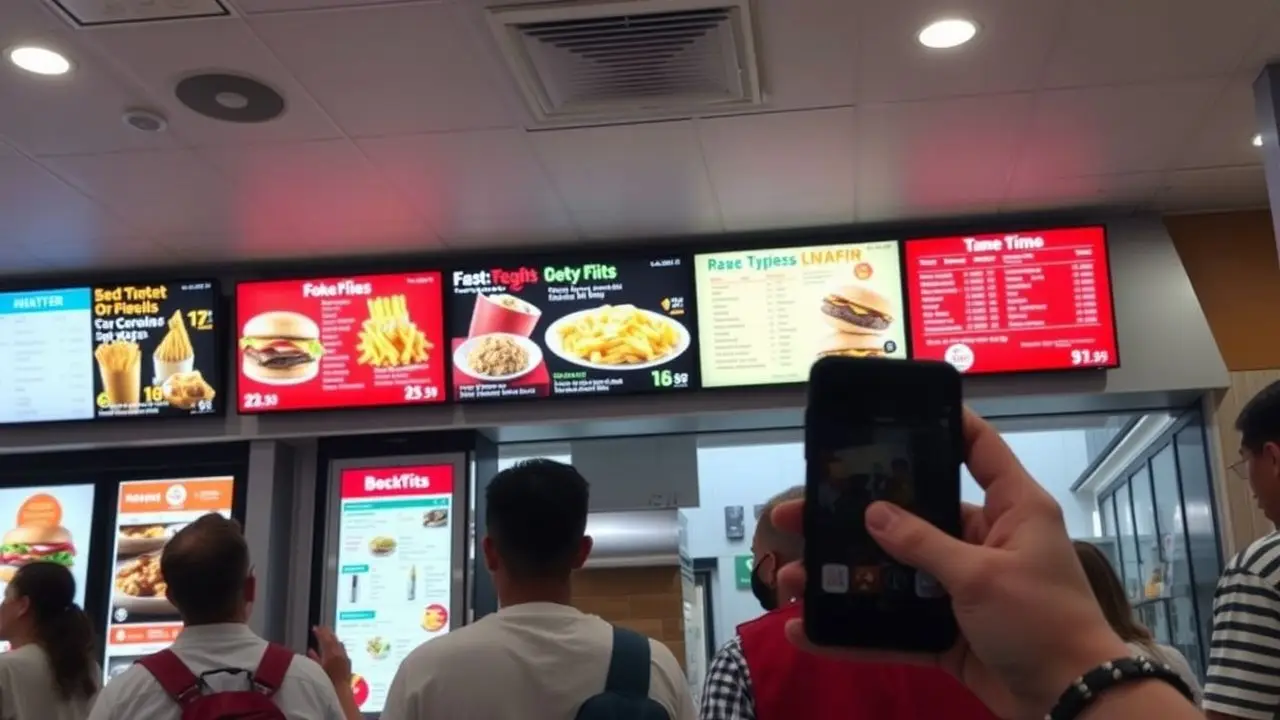
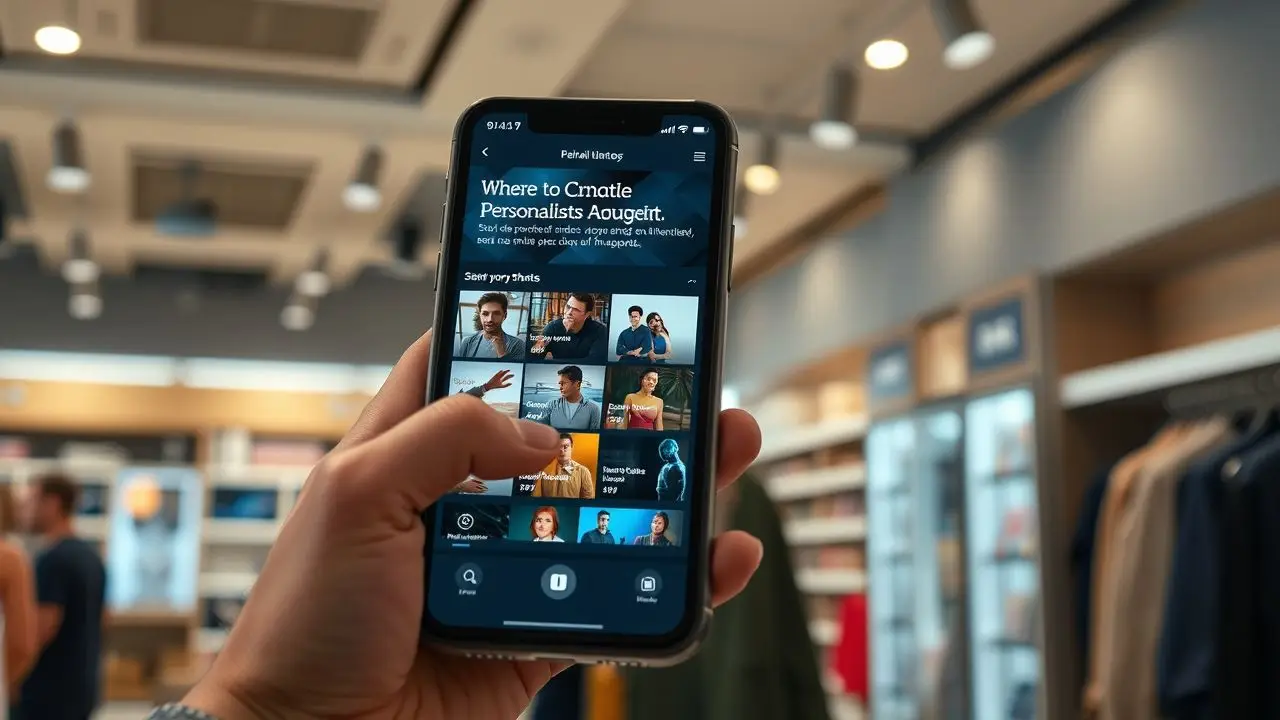

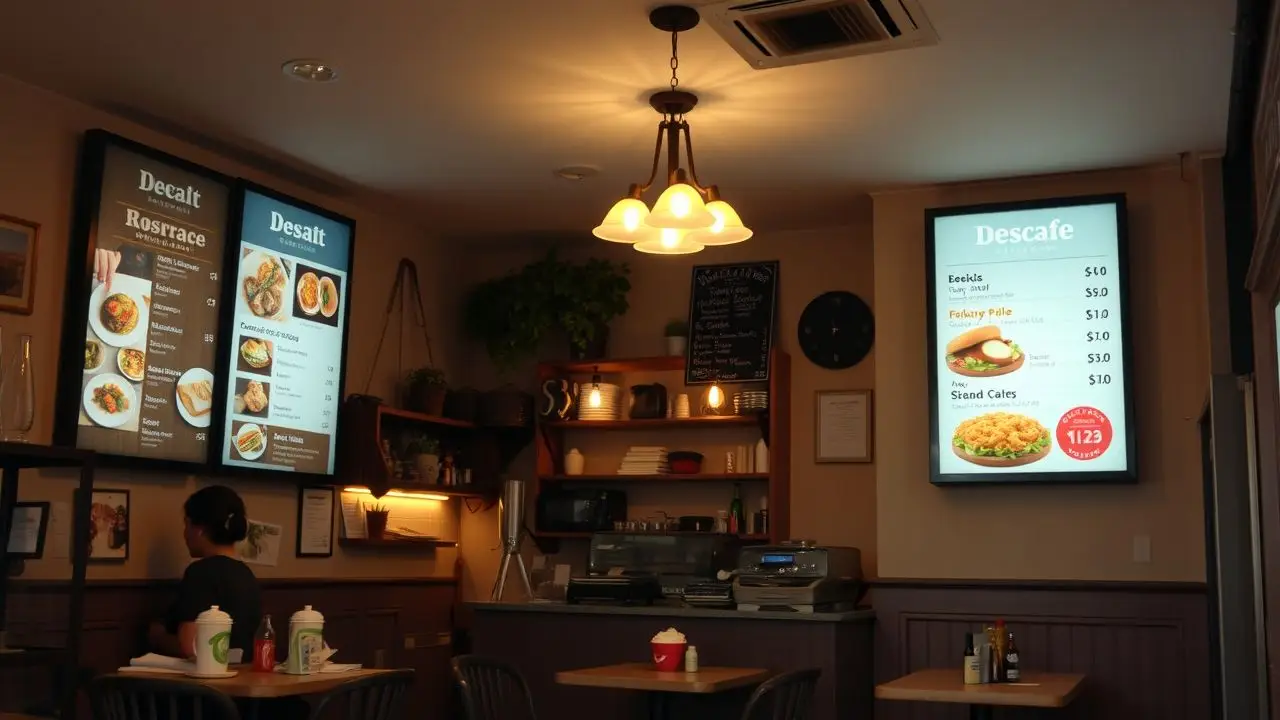
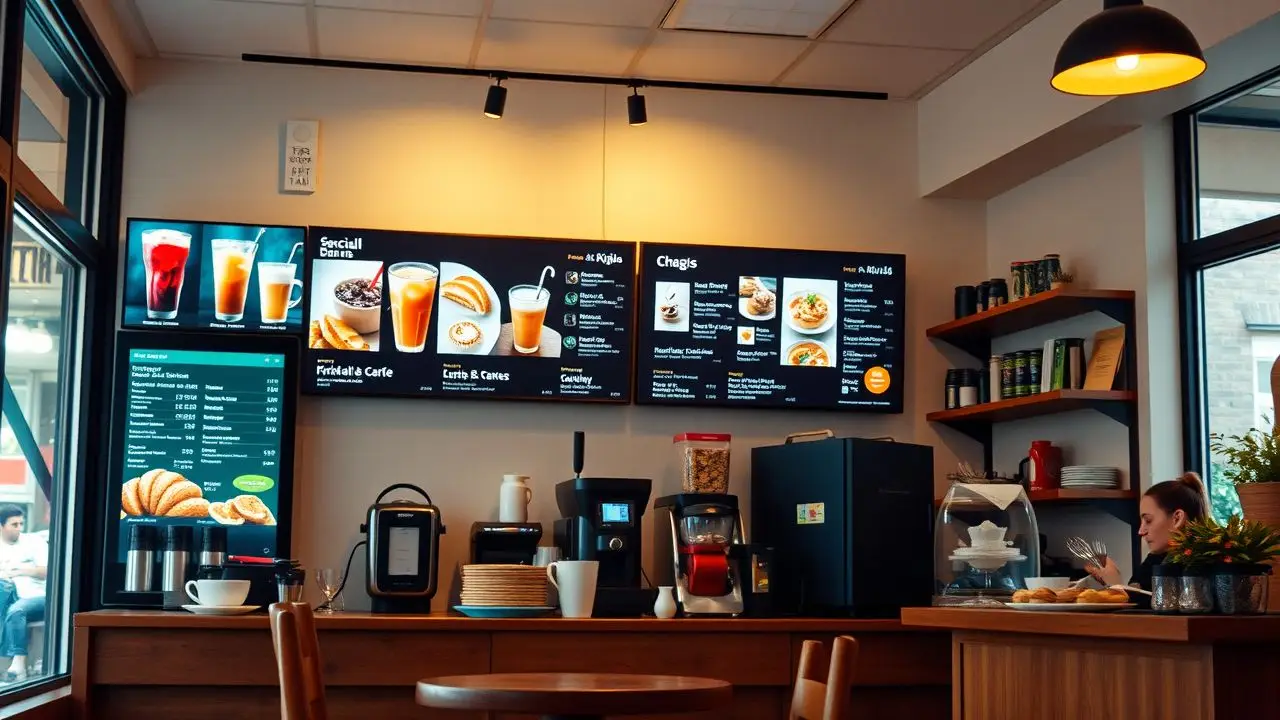
 Flexibility in menu display is a key advantage of
Flexibility in menu display is a key advantage of 

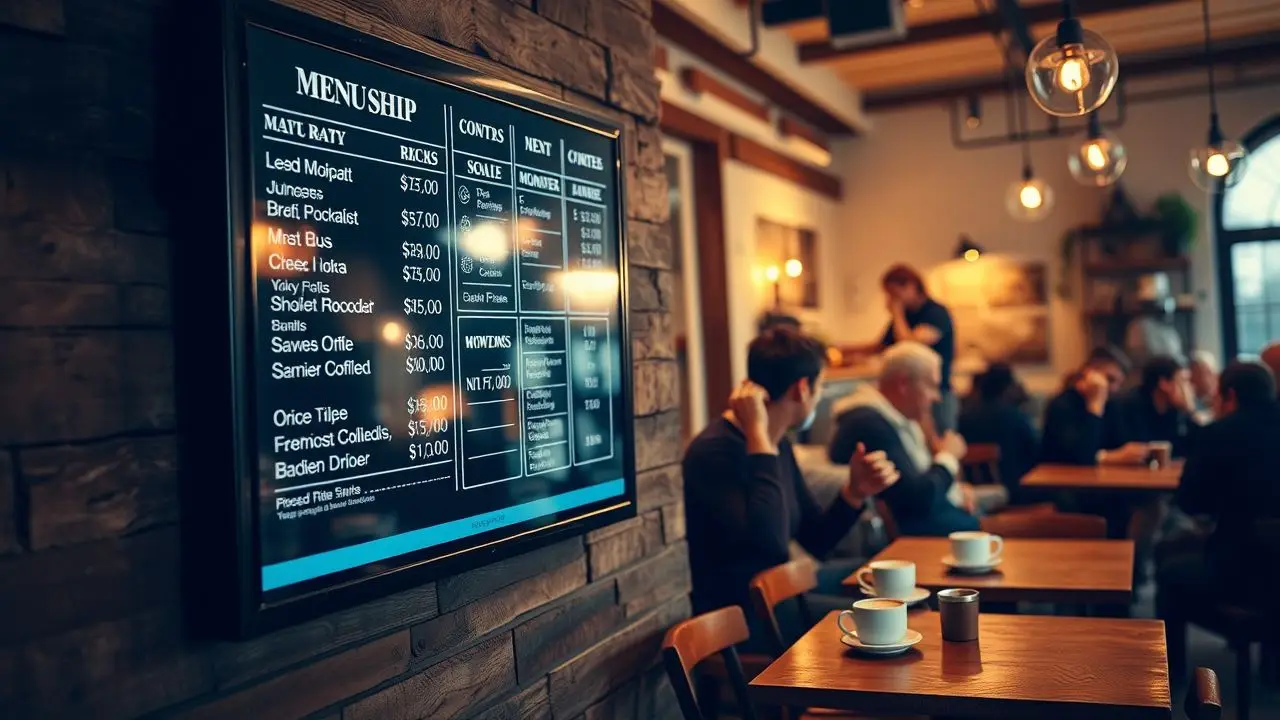
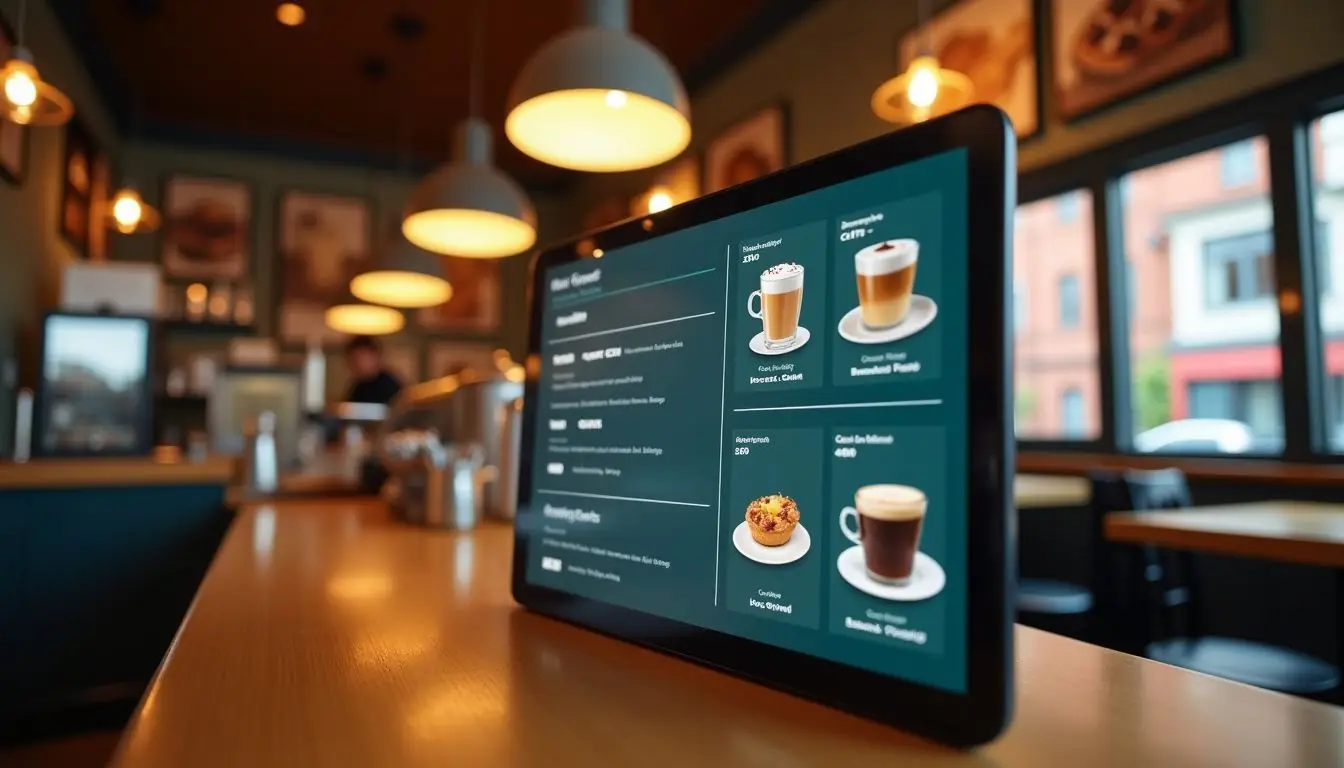

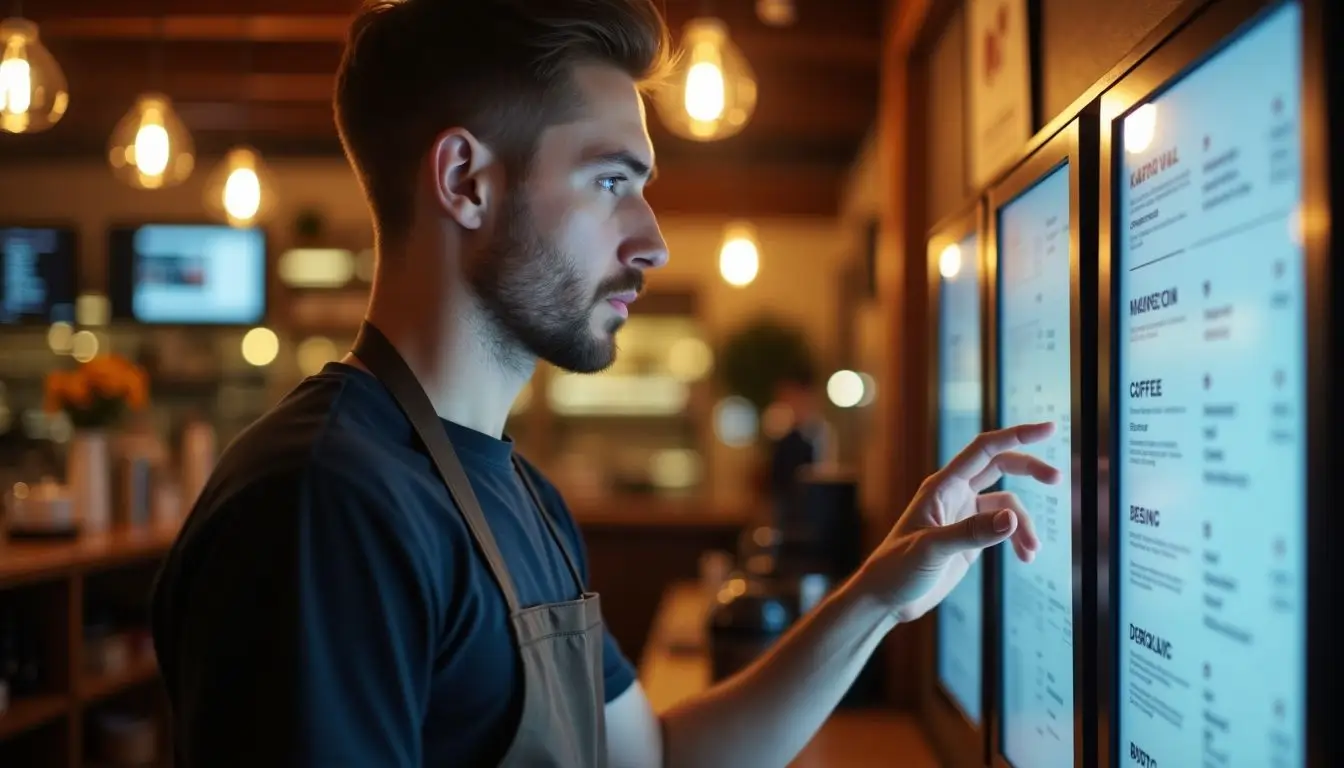
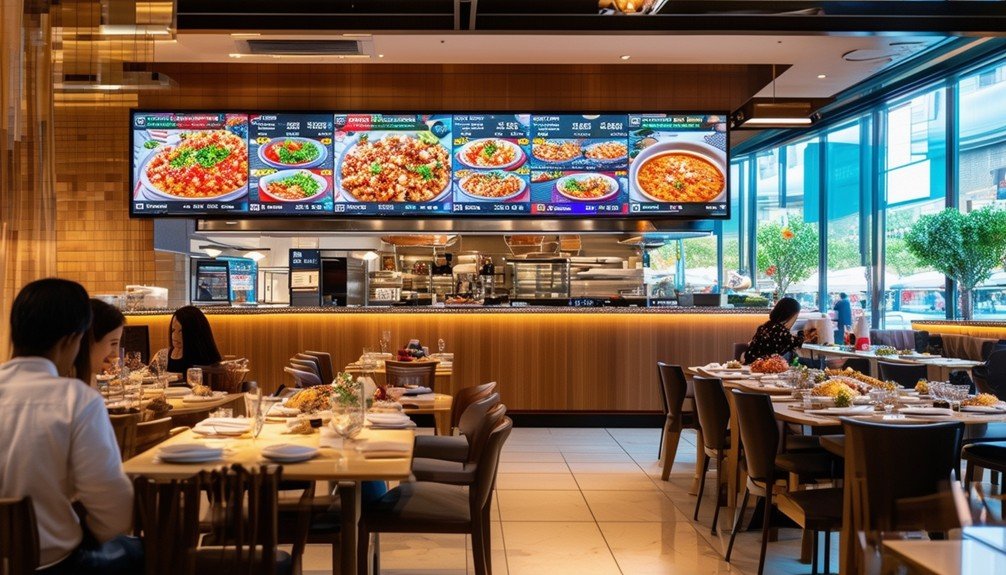
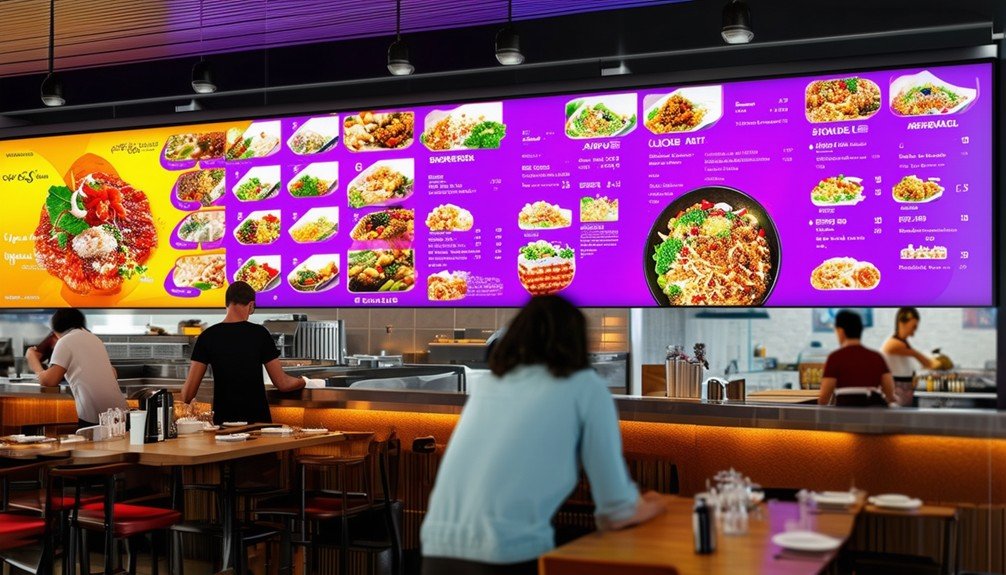
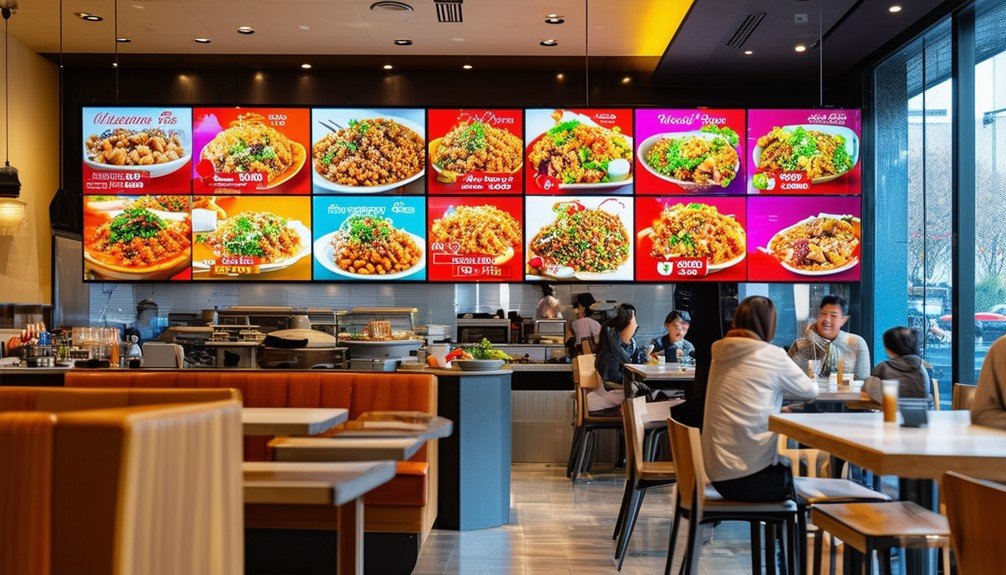
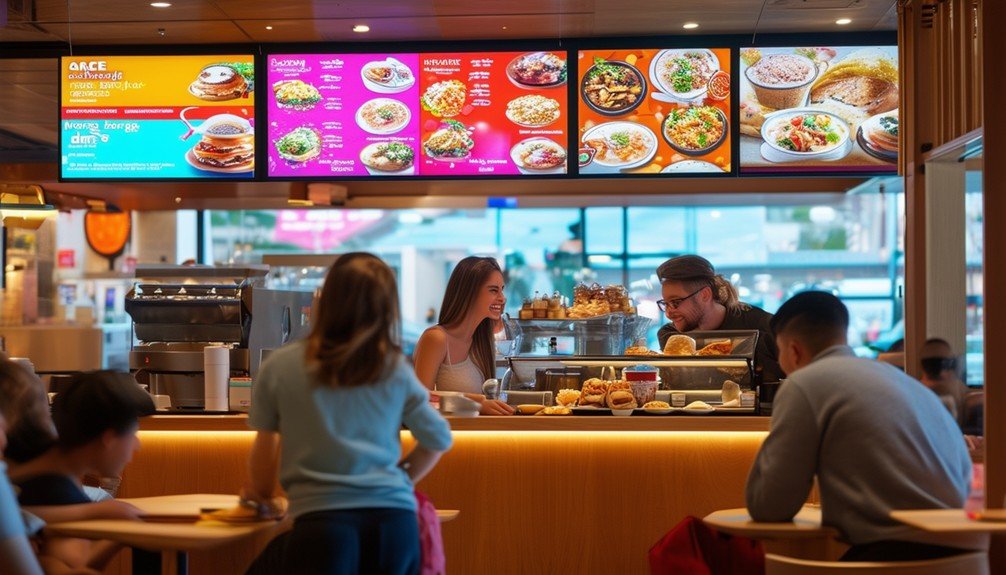
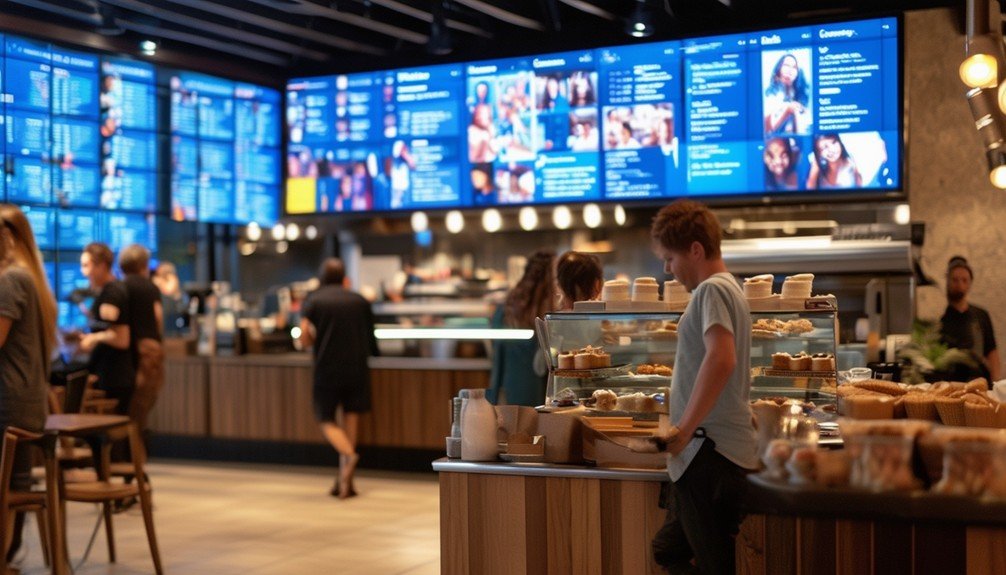
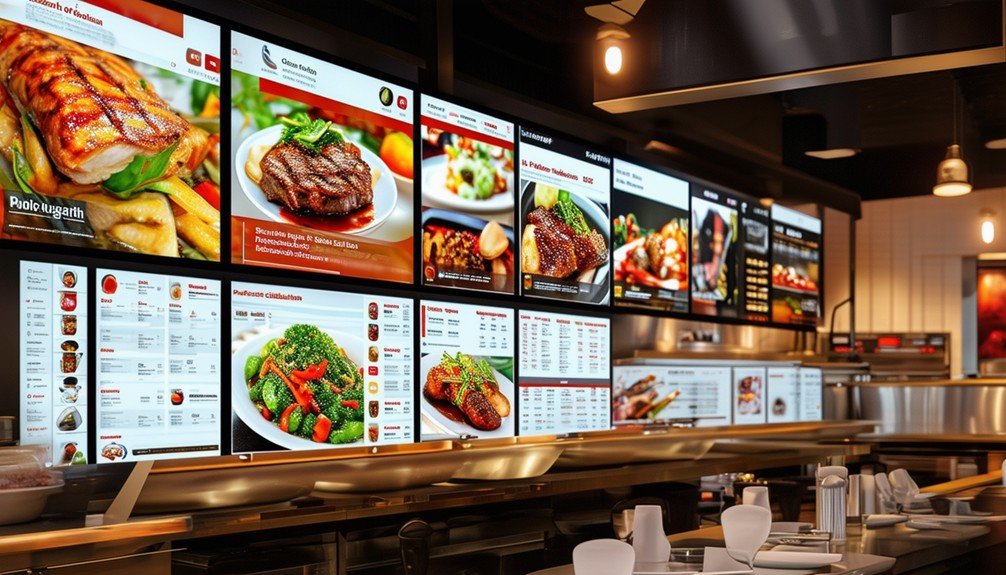
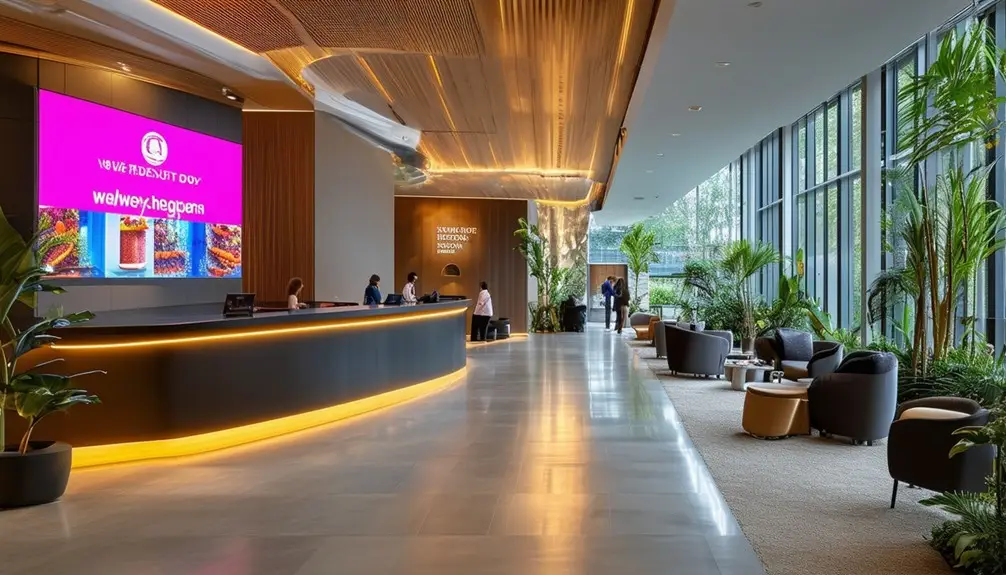
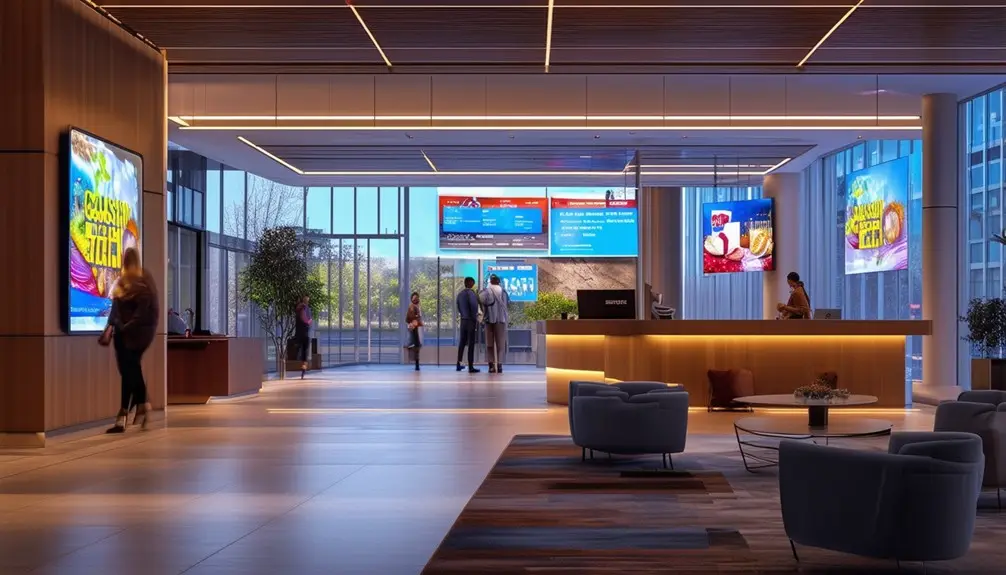
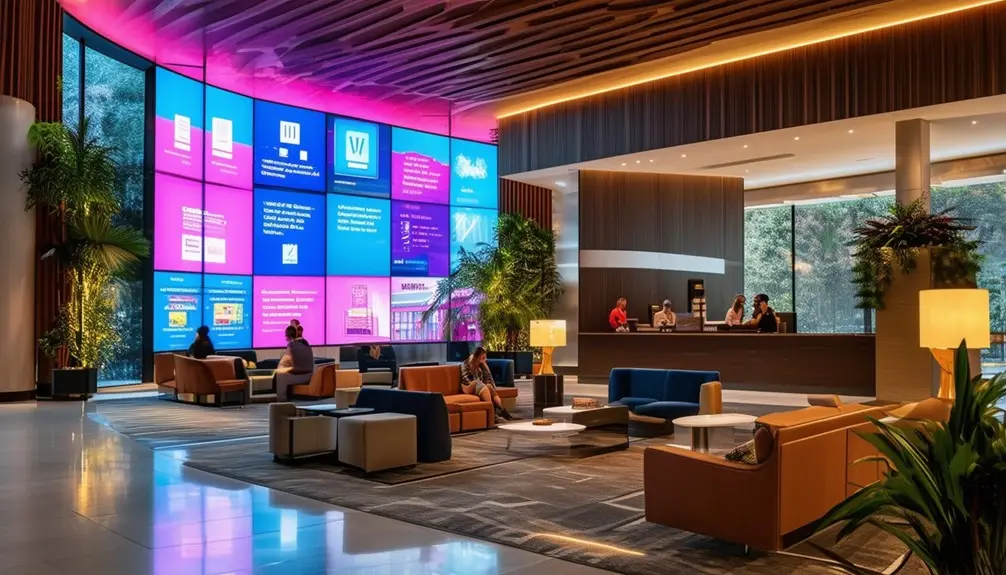



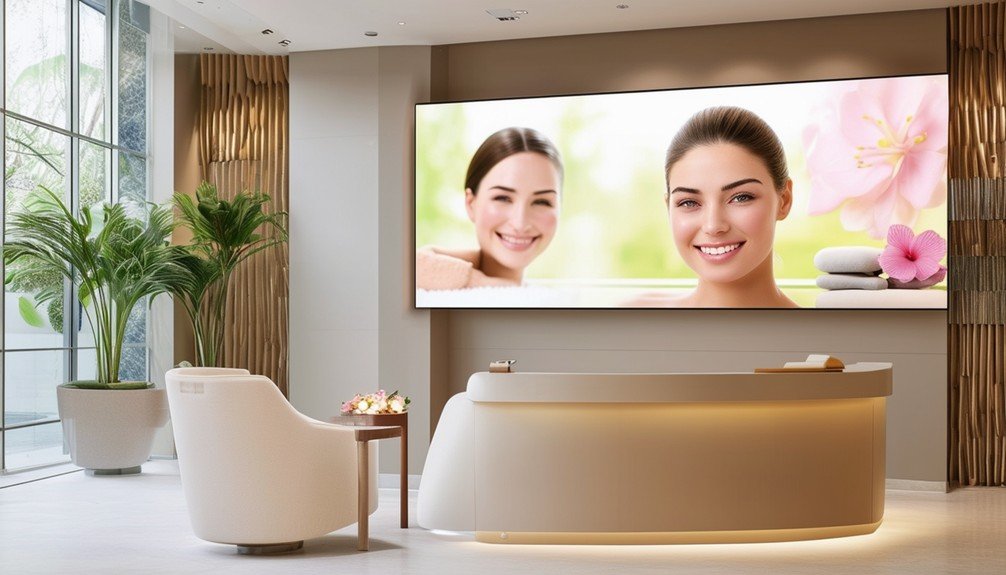
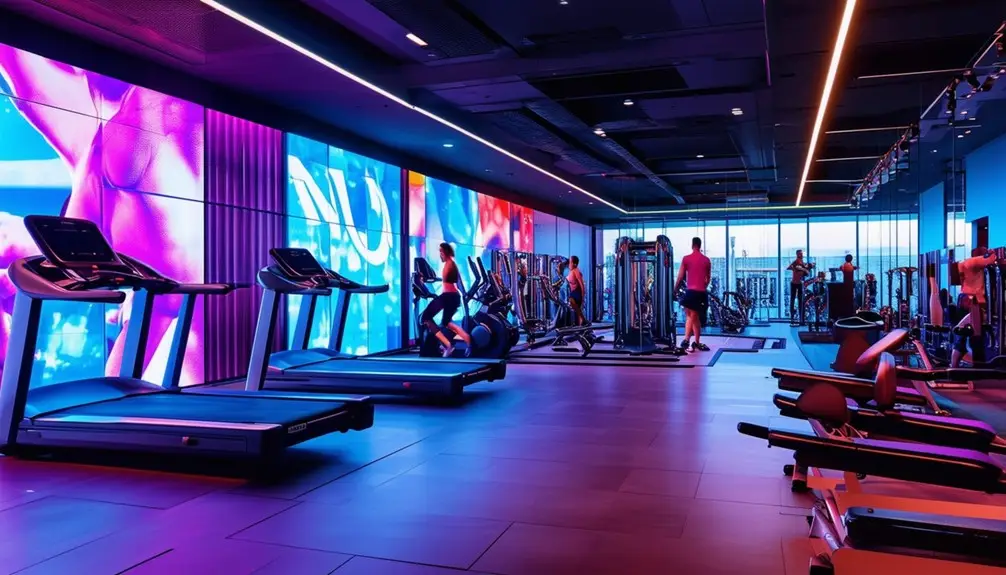
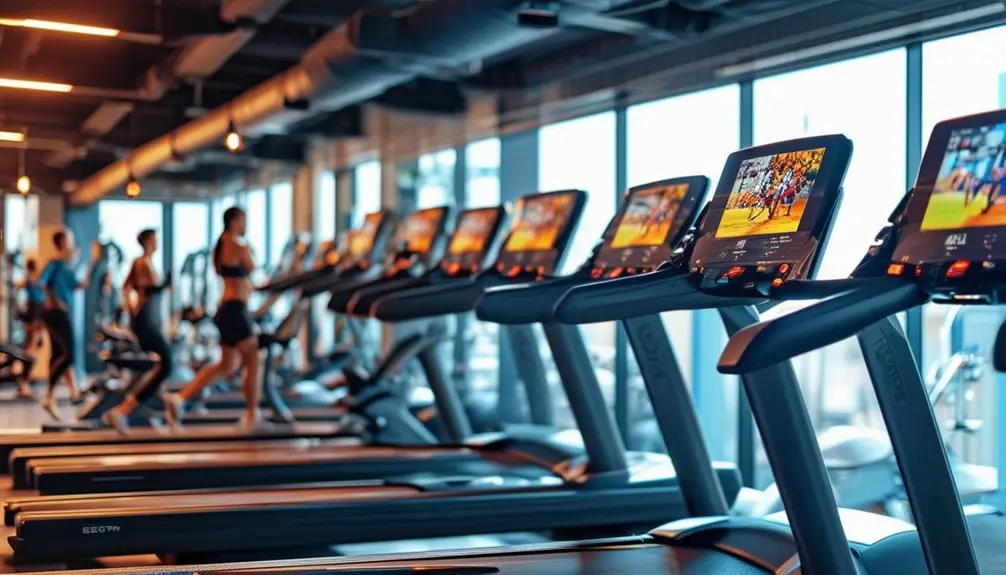
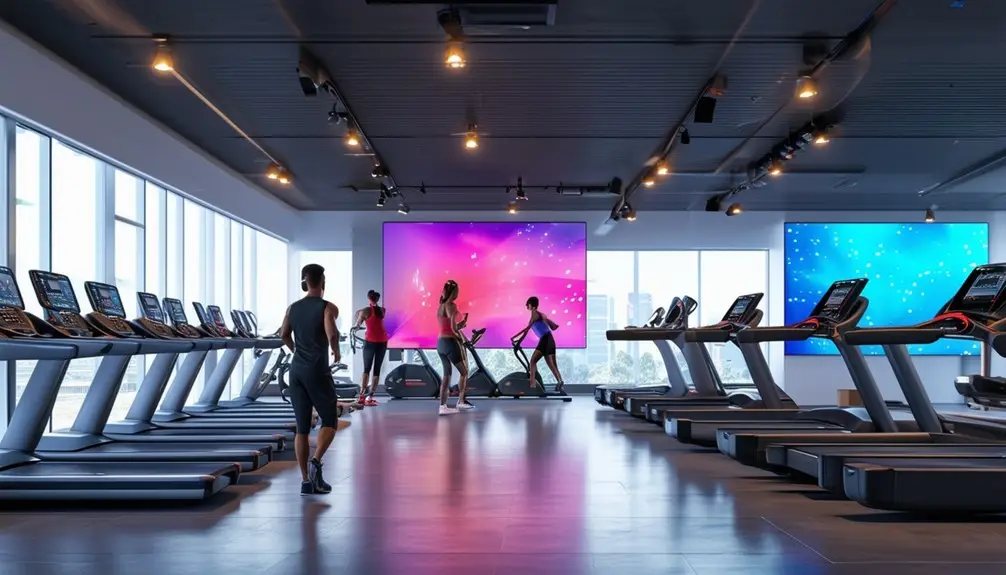
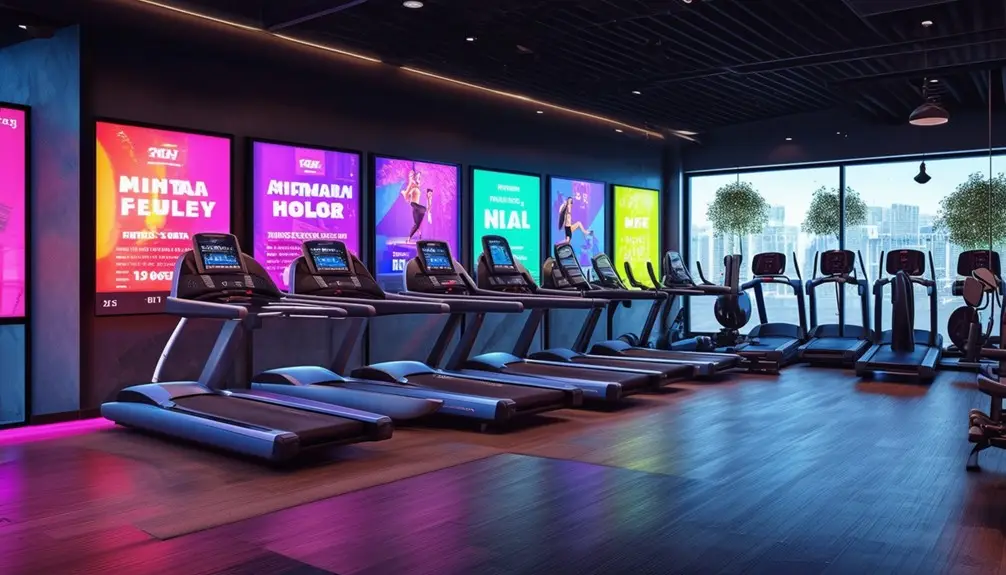

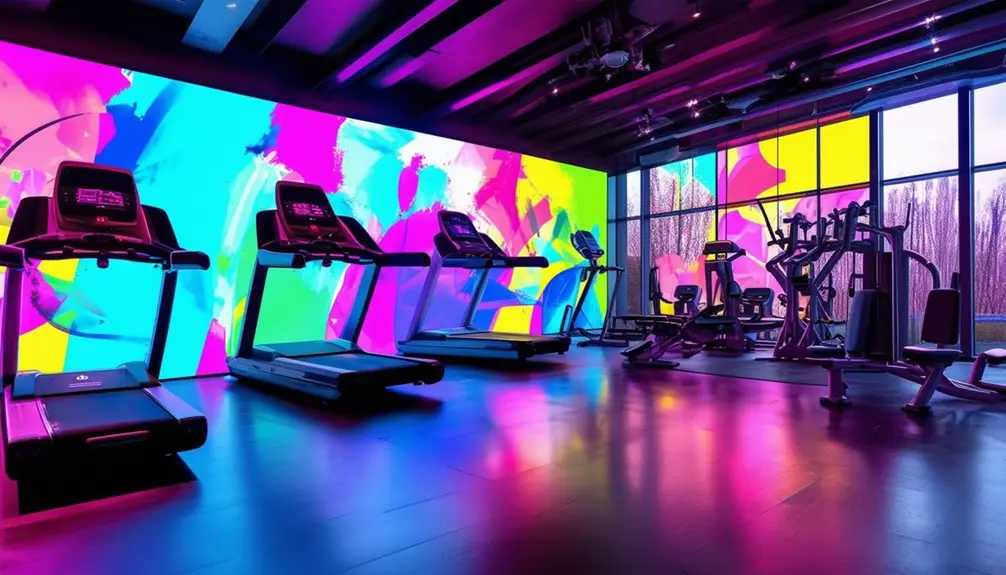
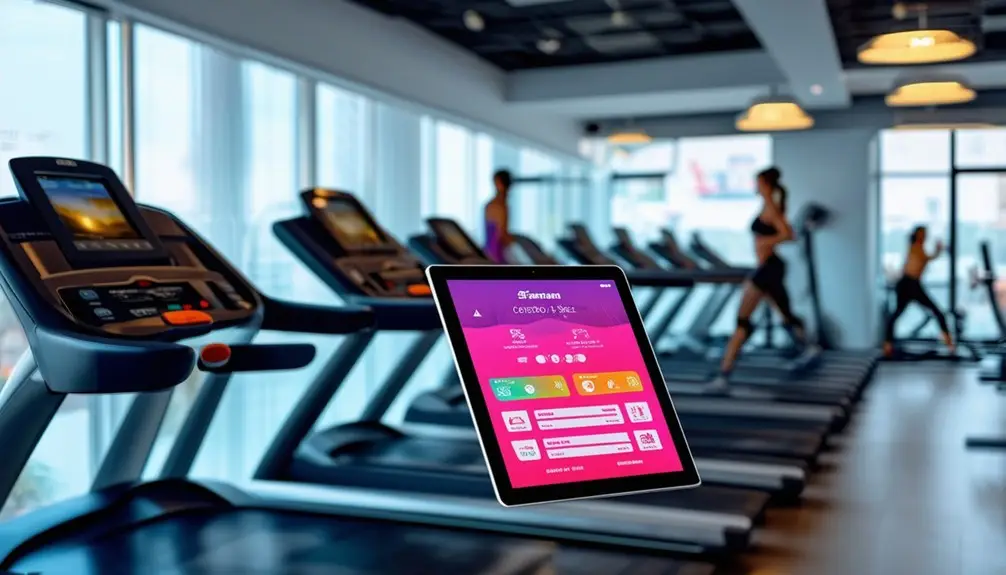
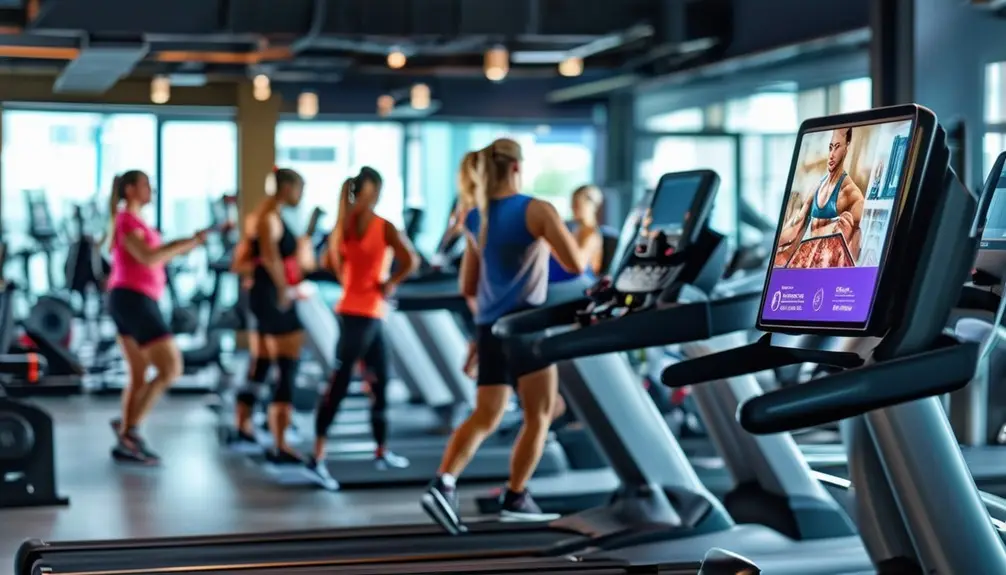
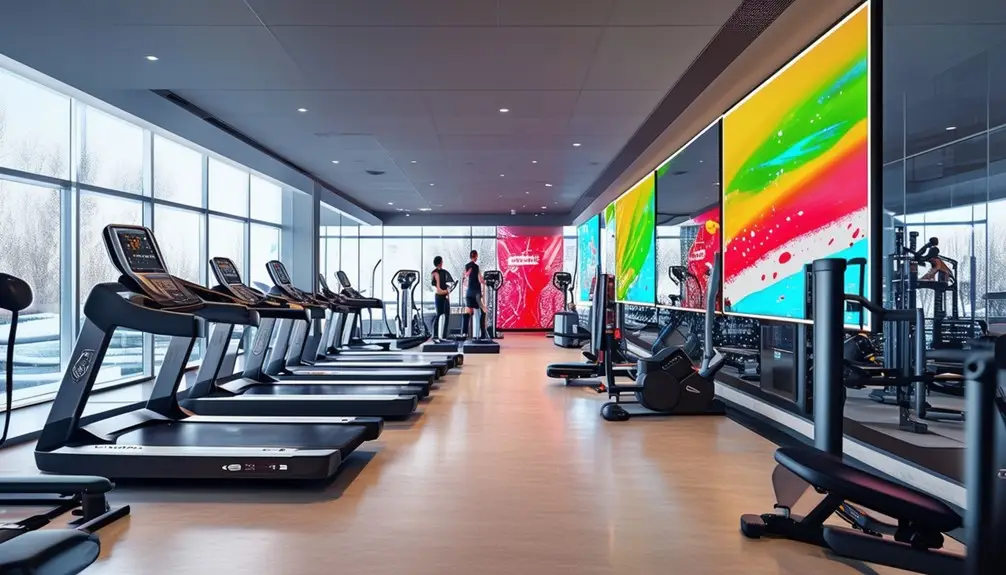
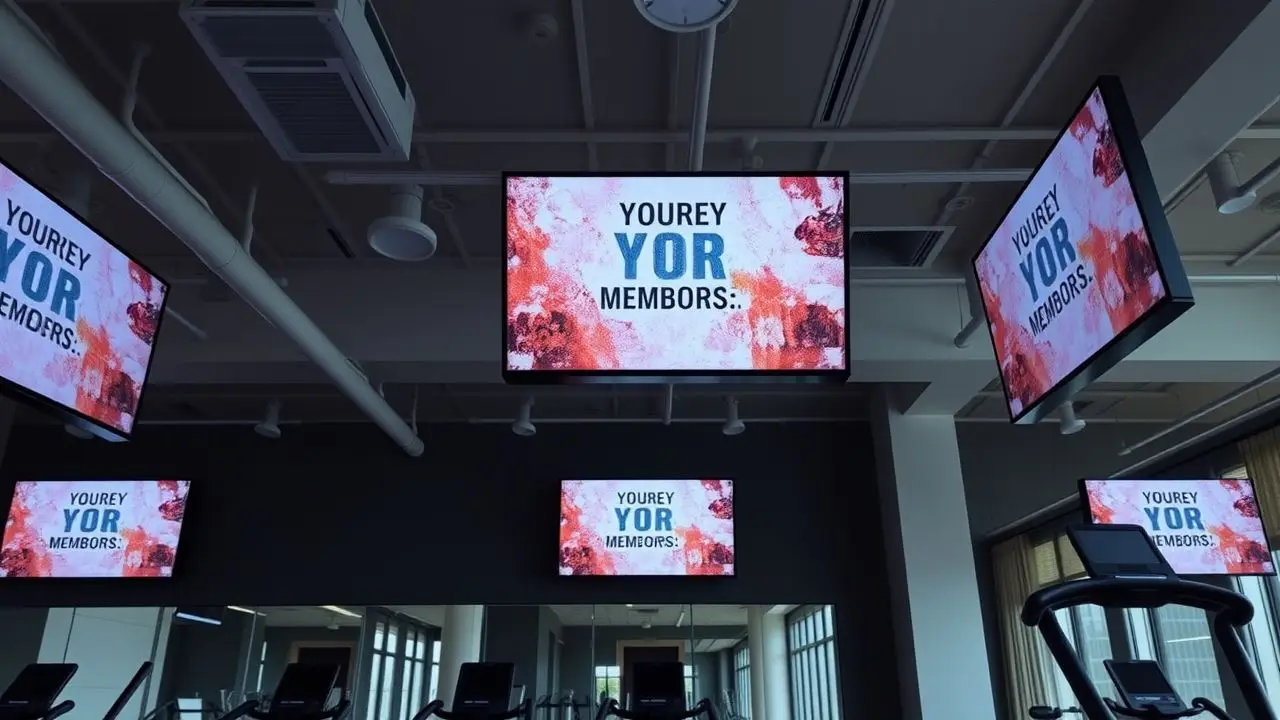
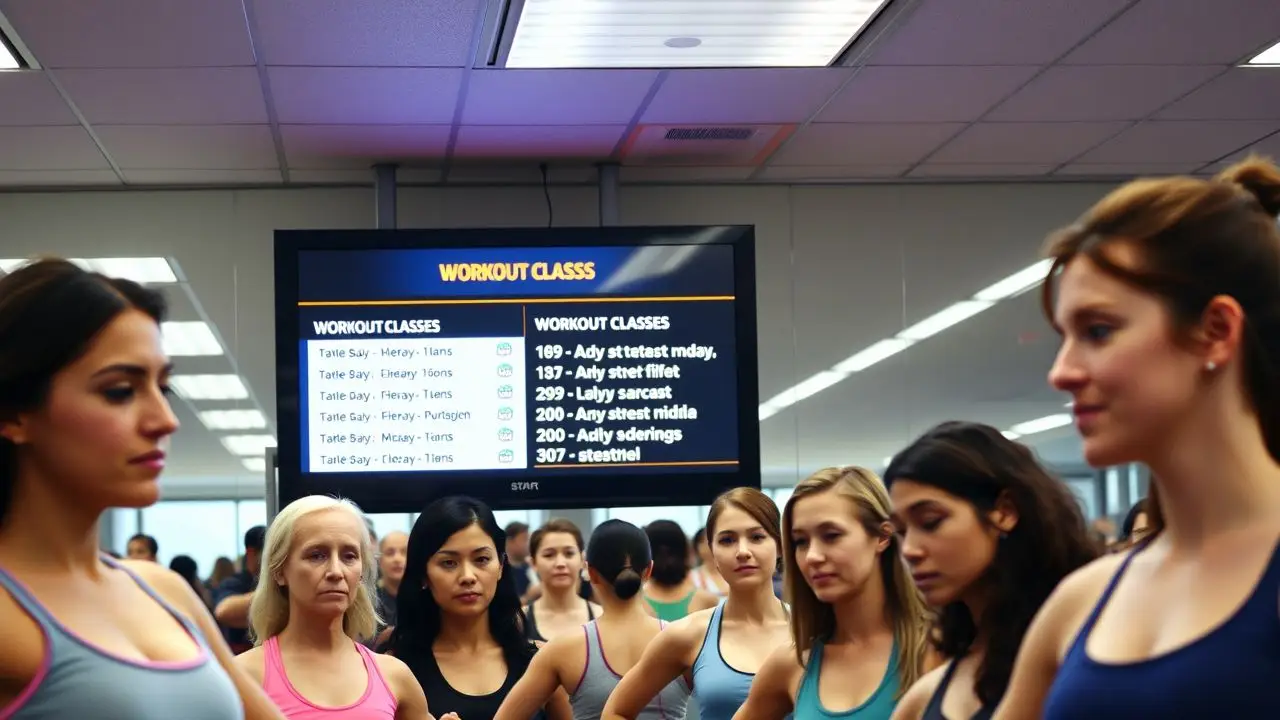
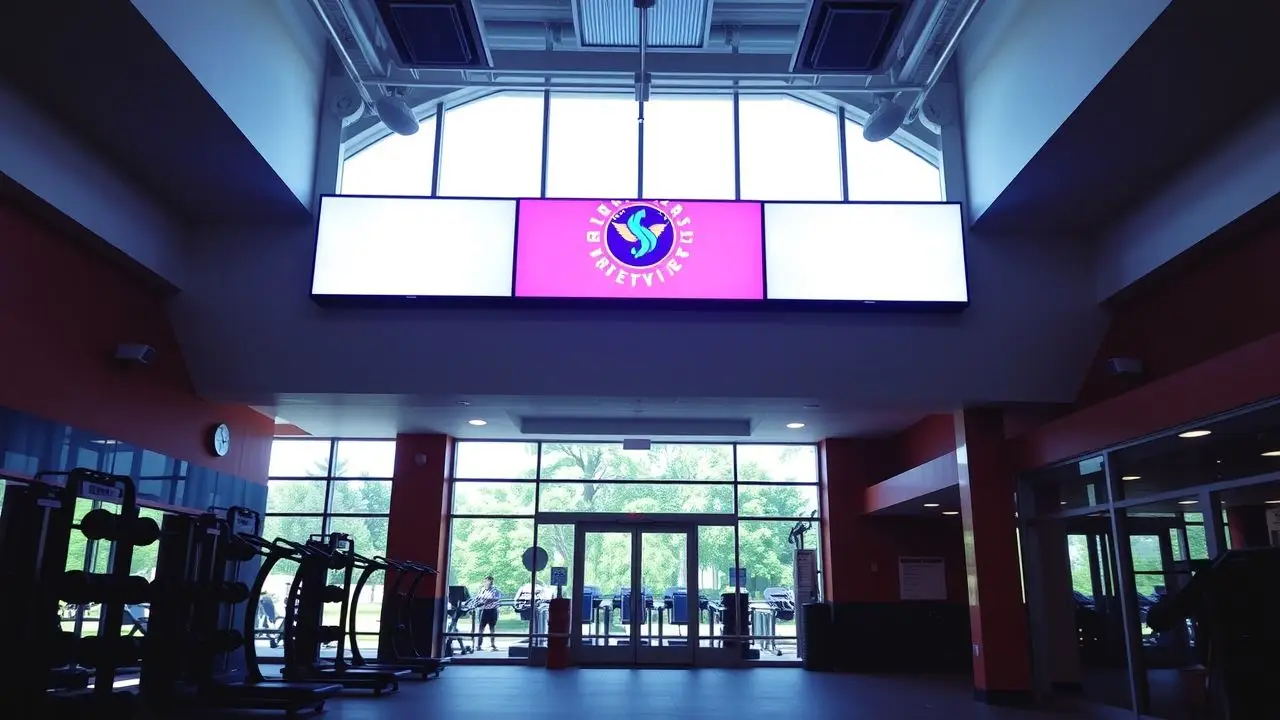

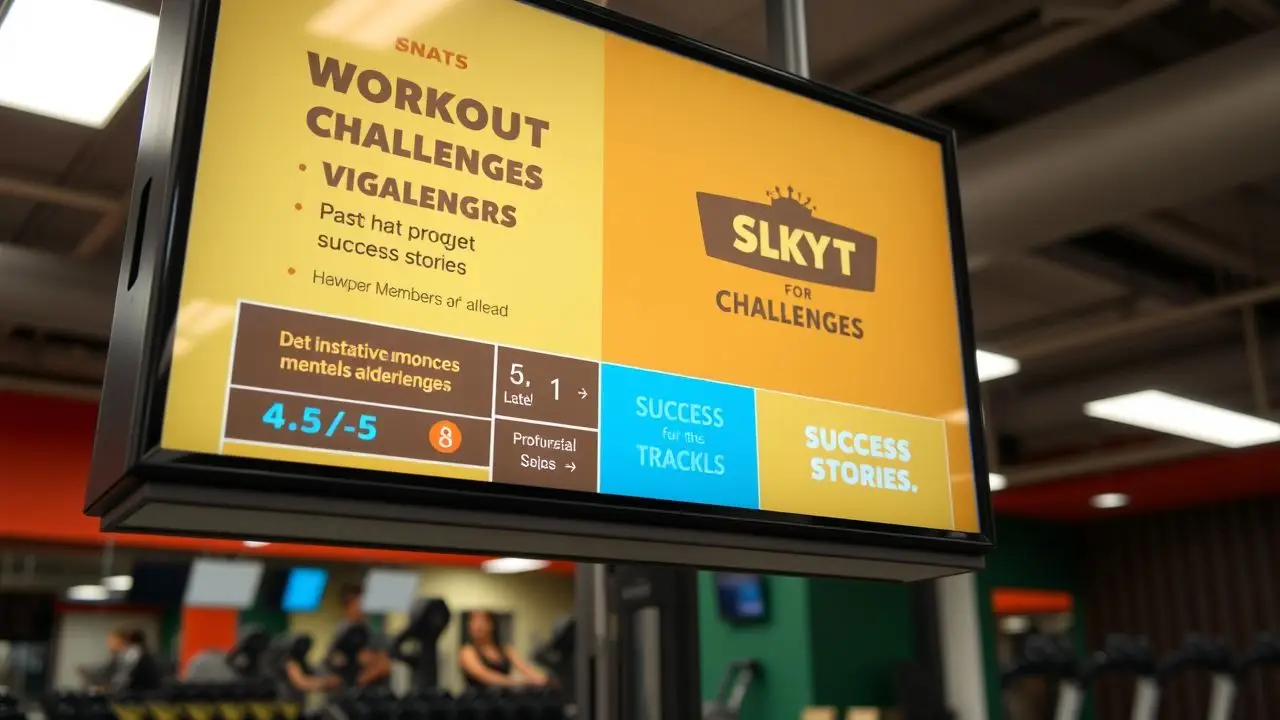
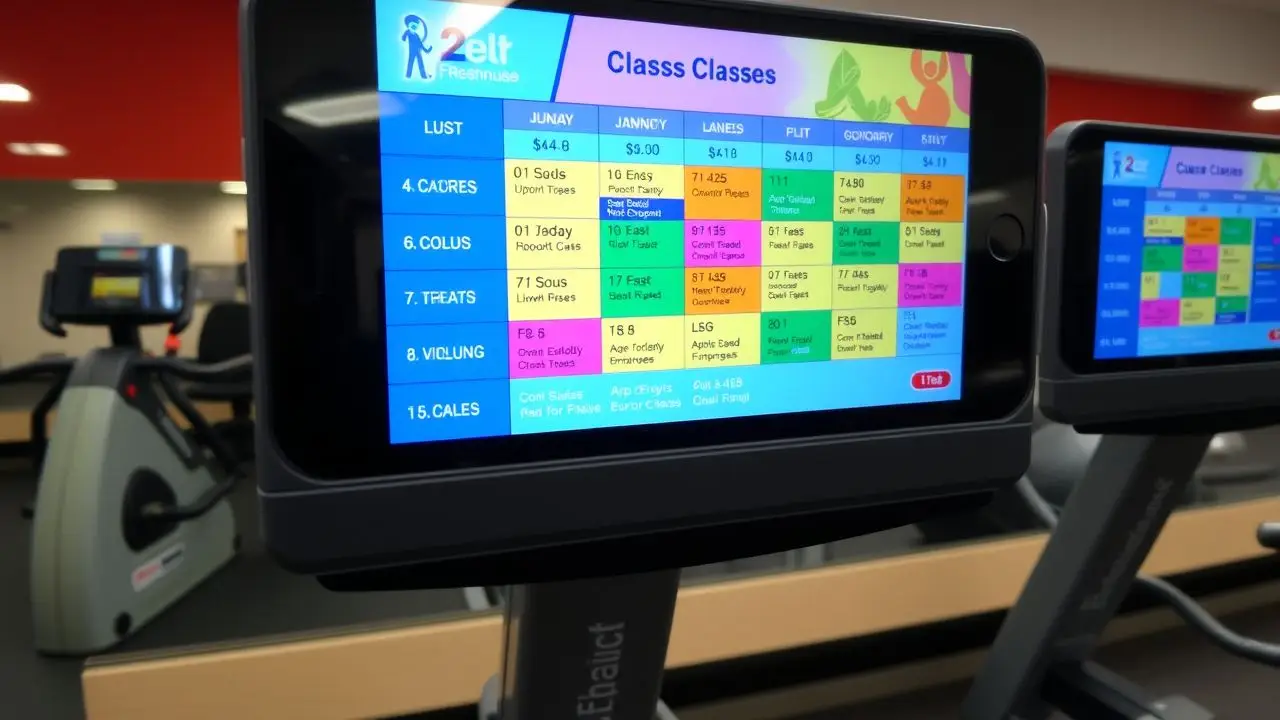

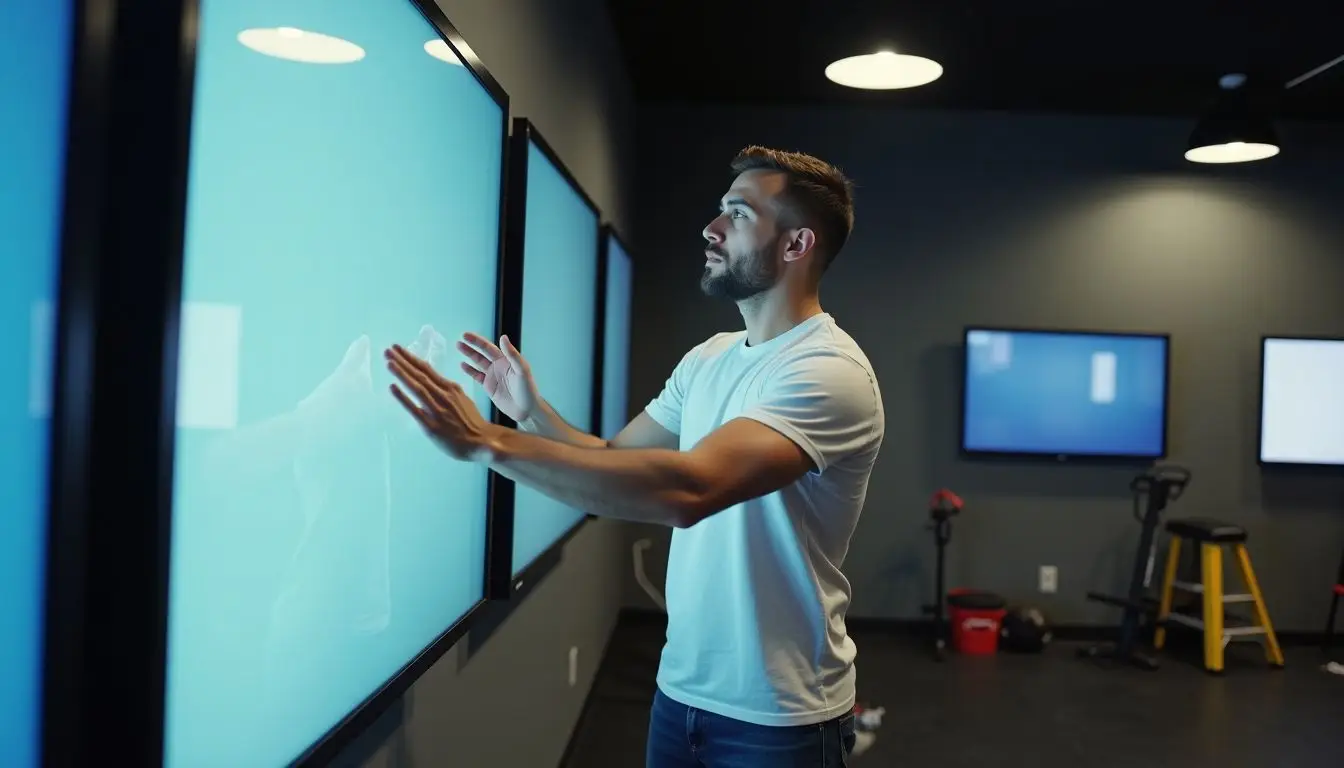
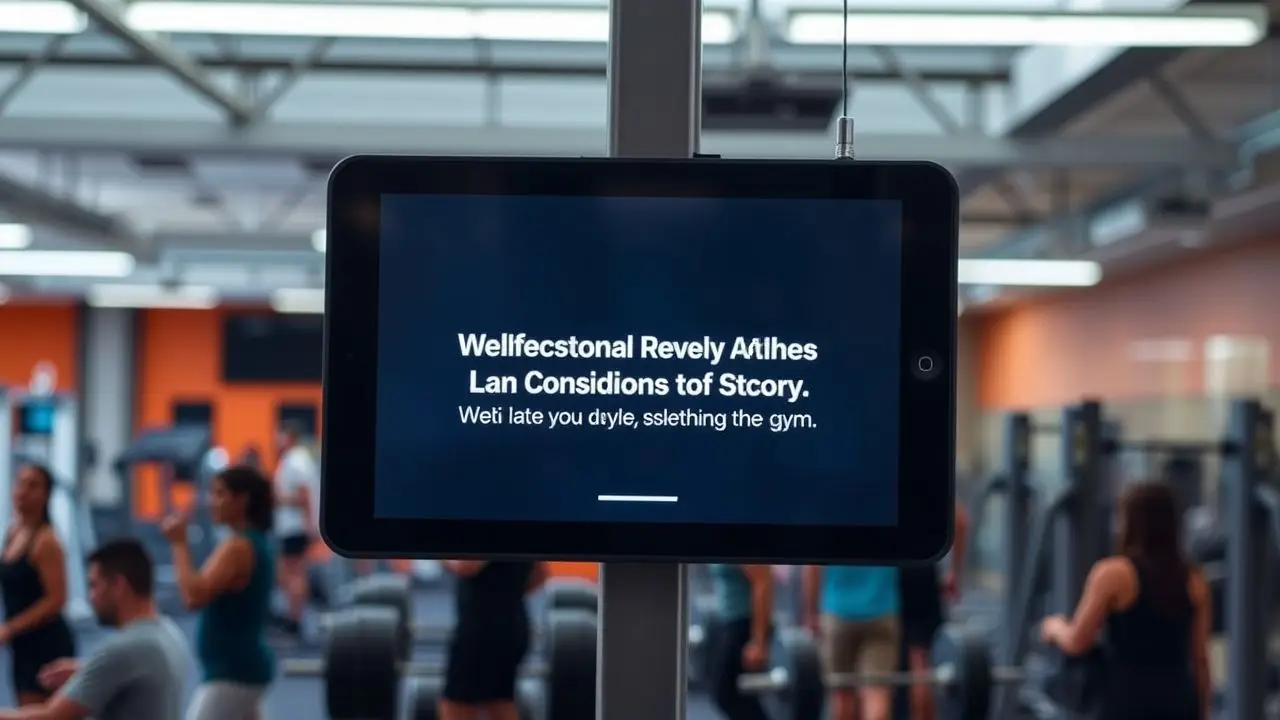
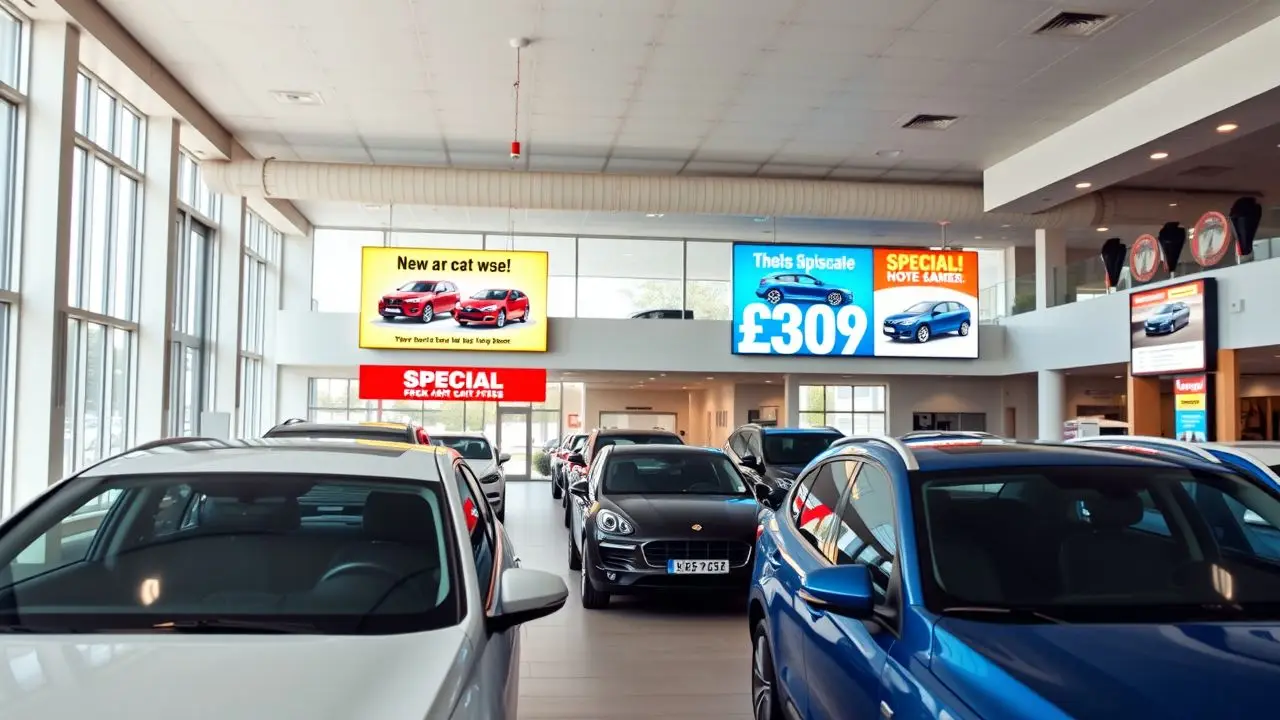


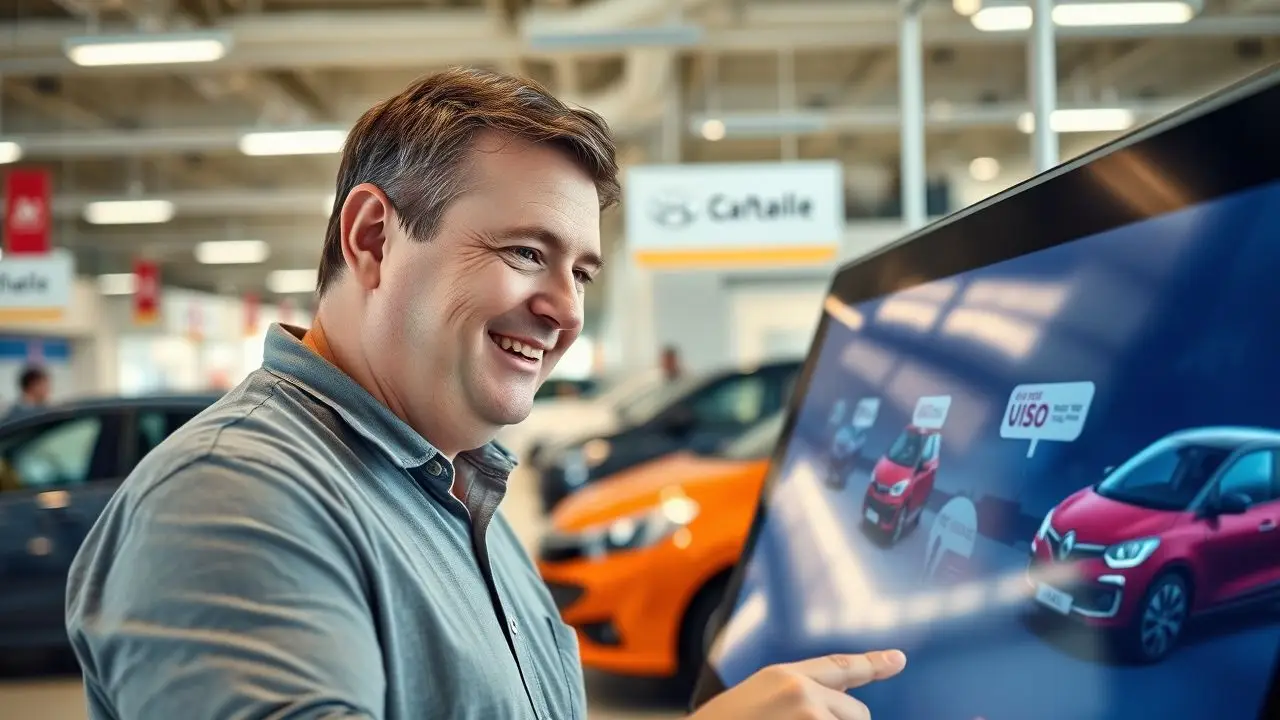
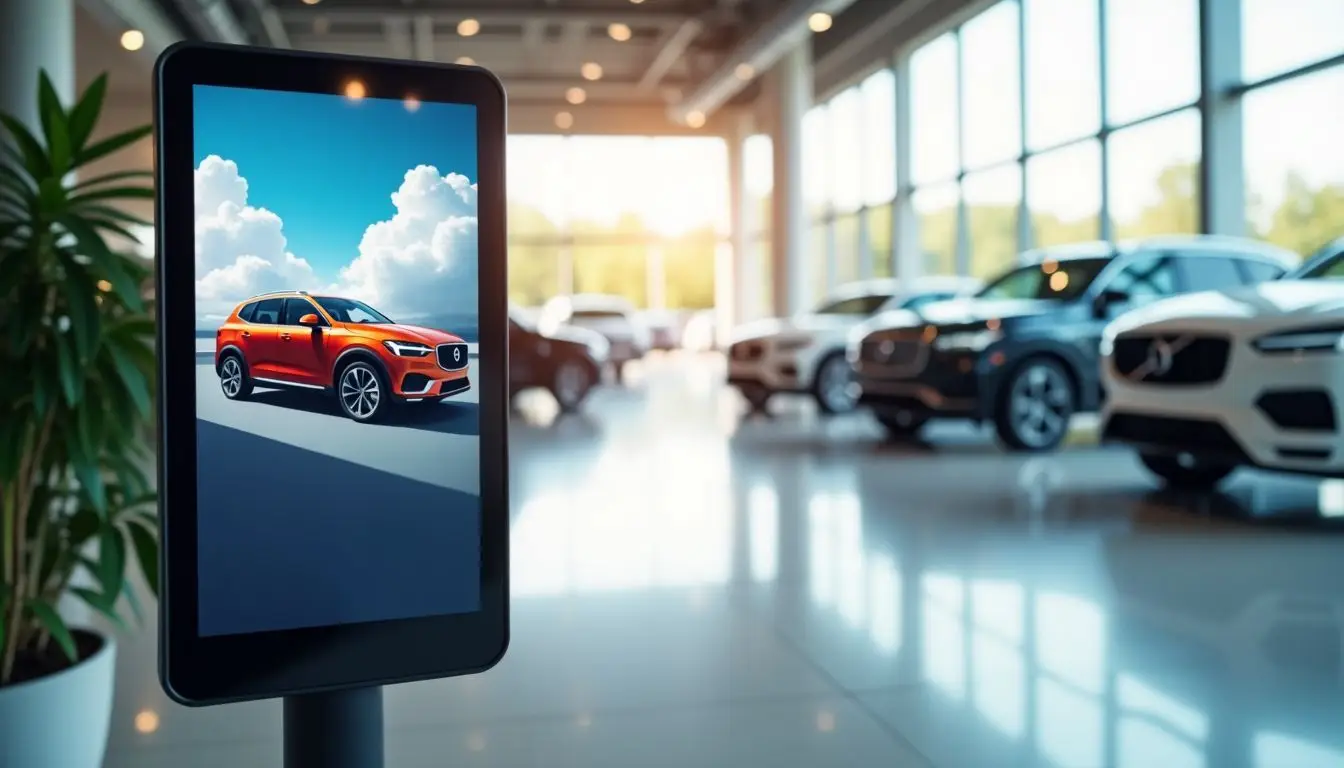


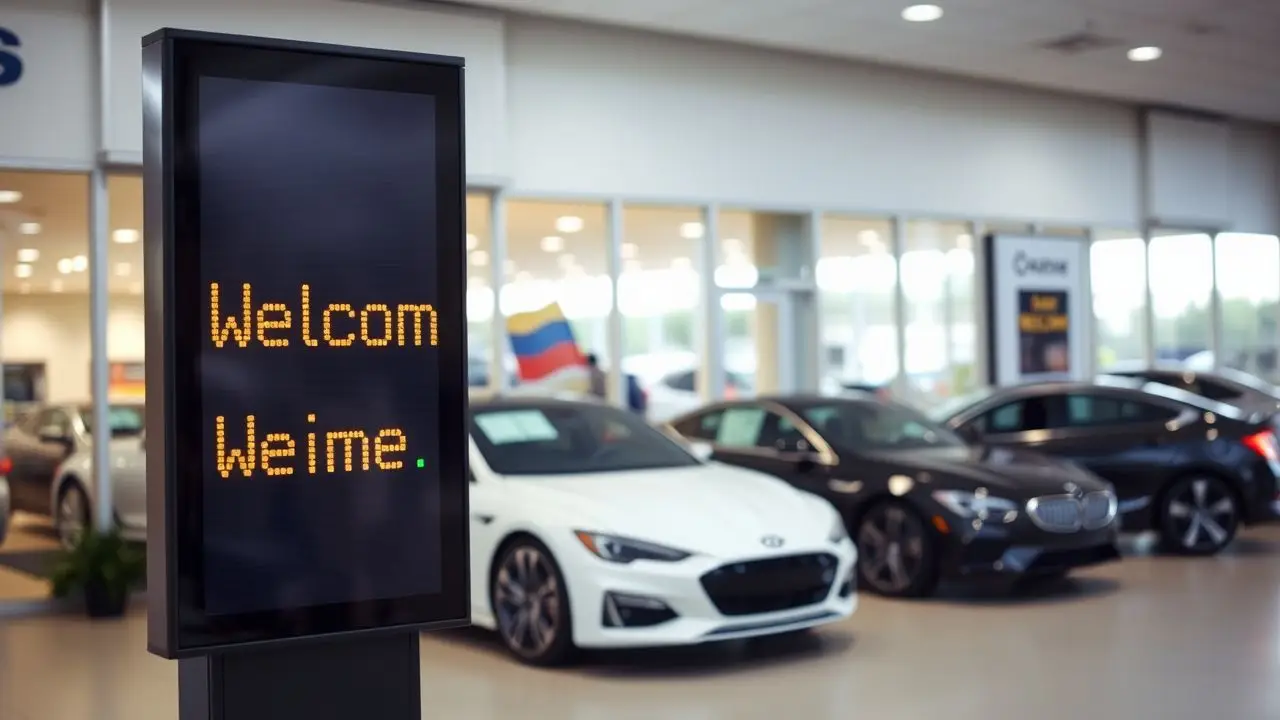
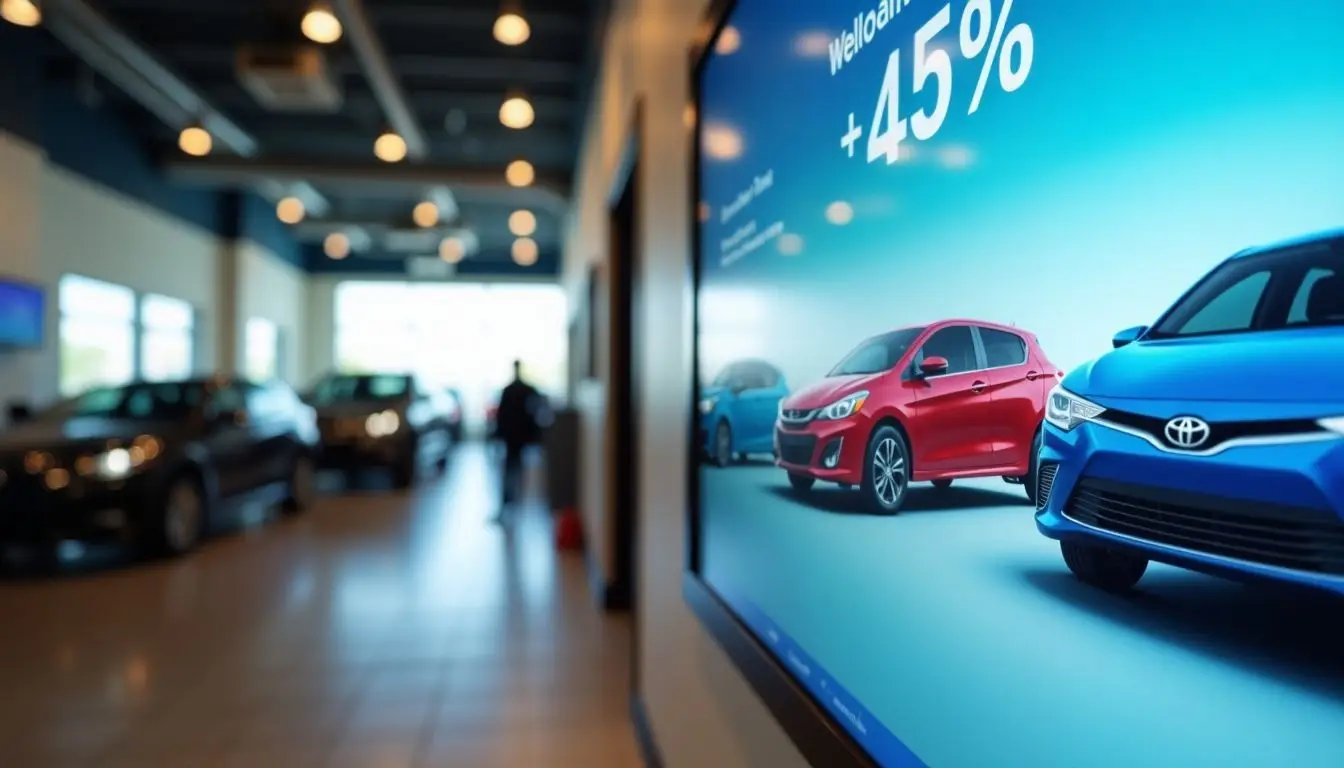
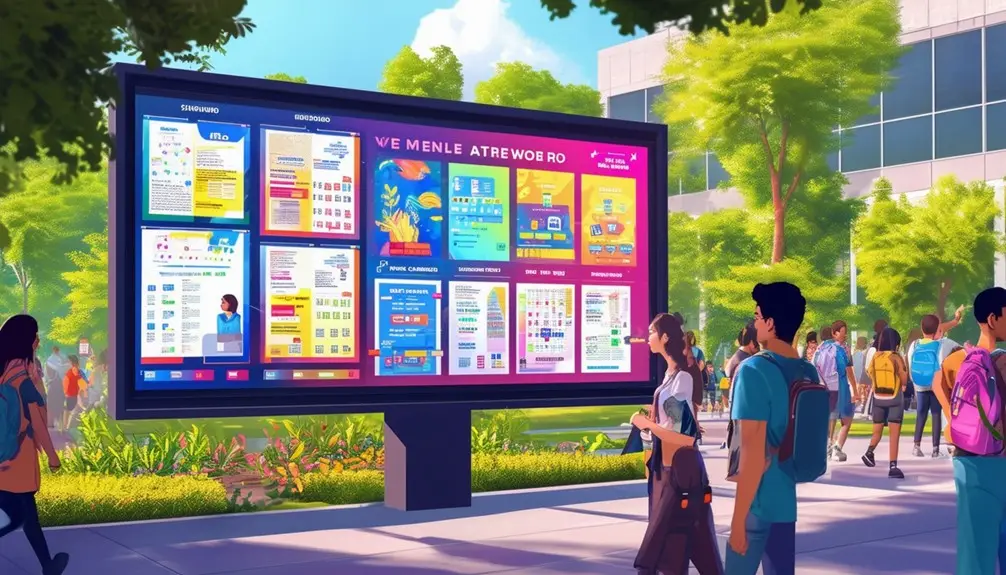
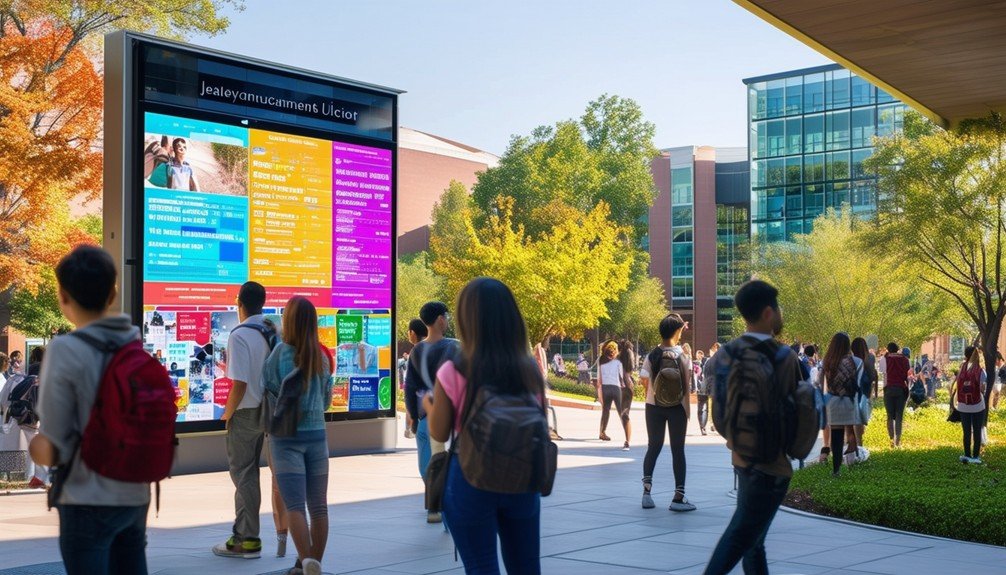
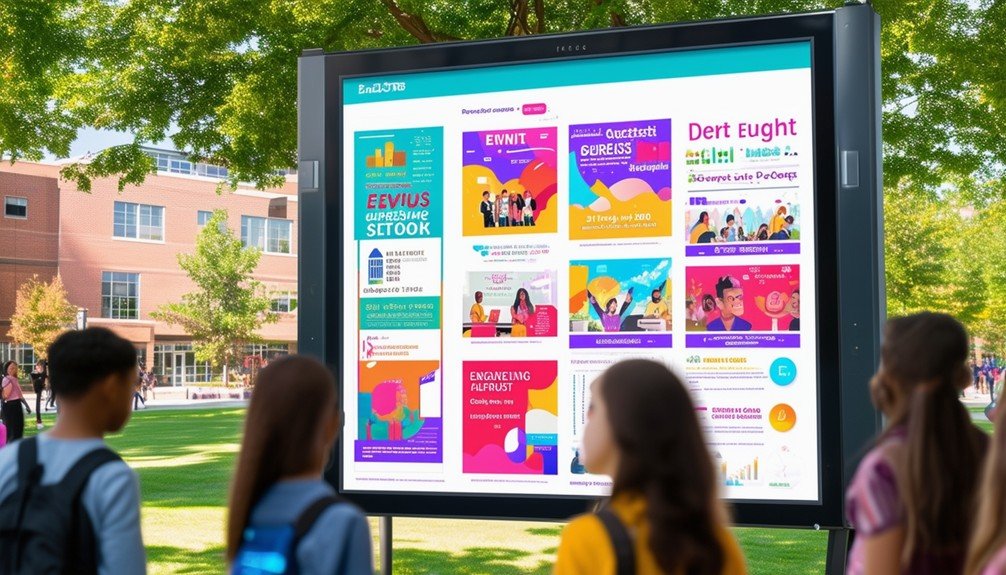
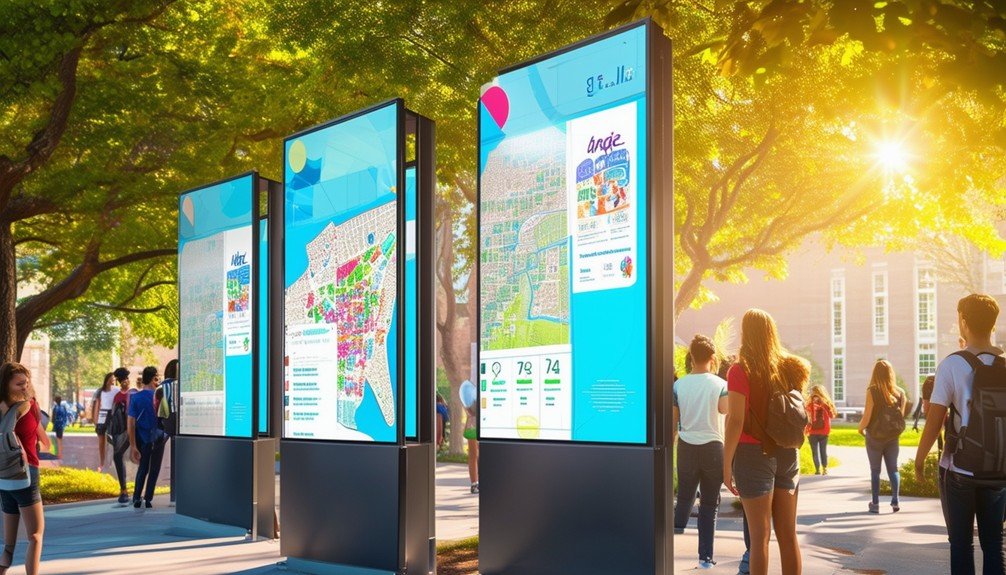
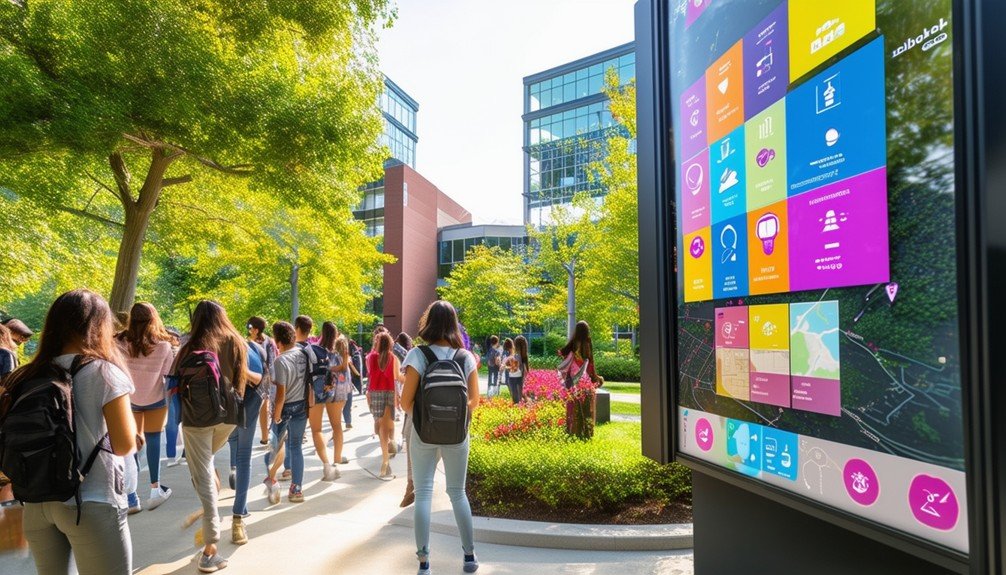
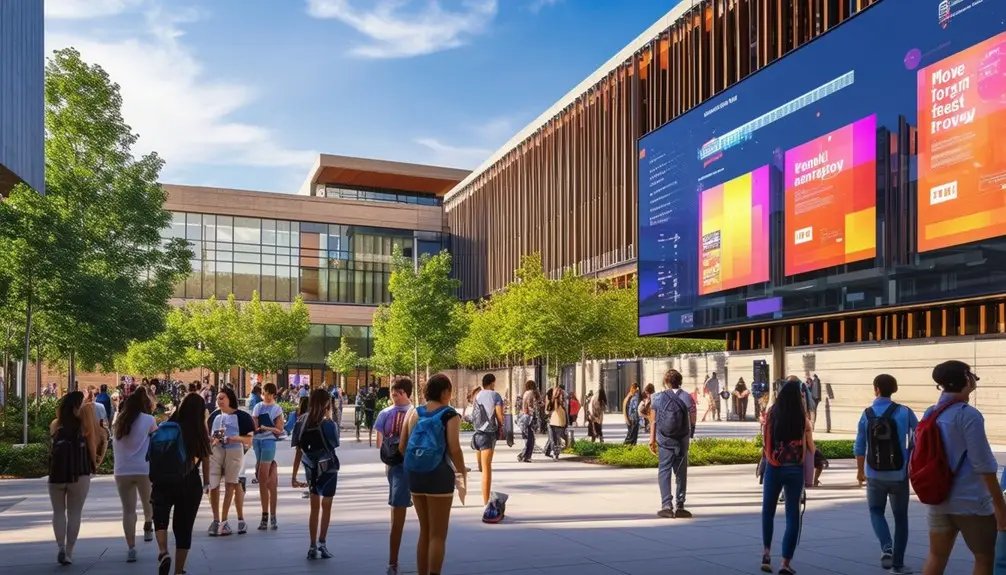
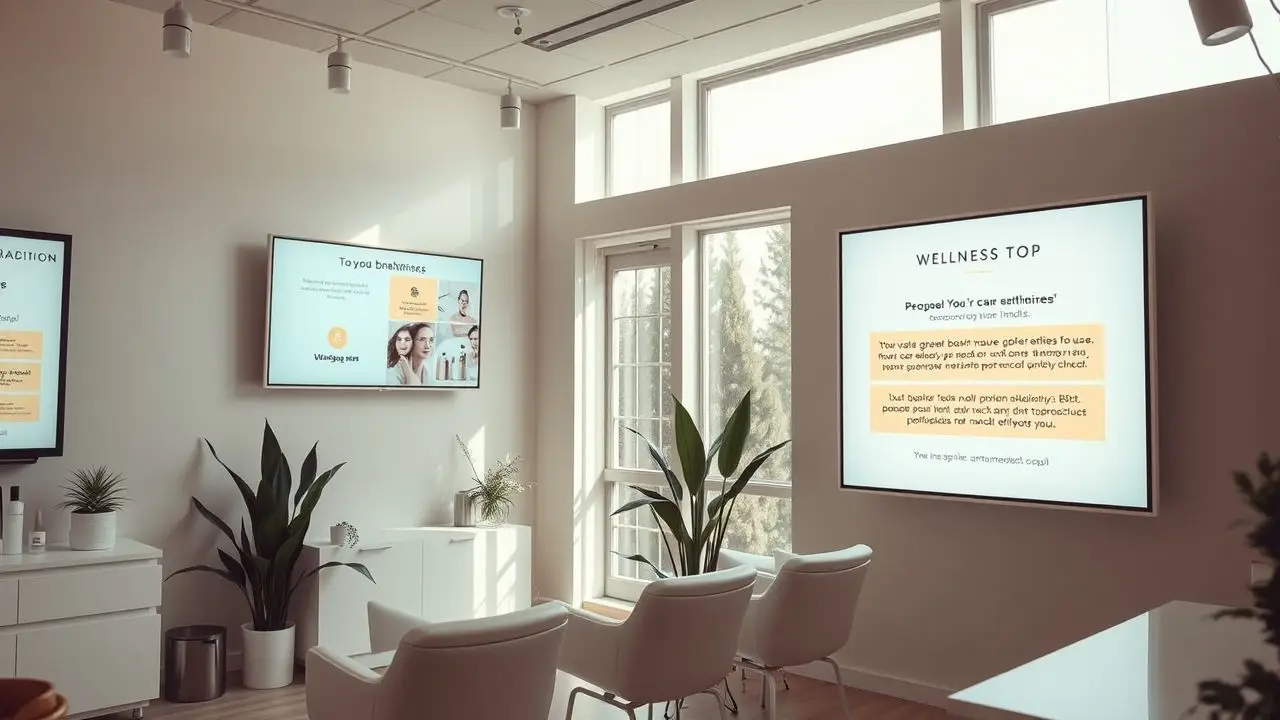
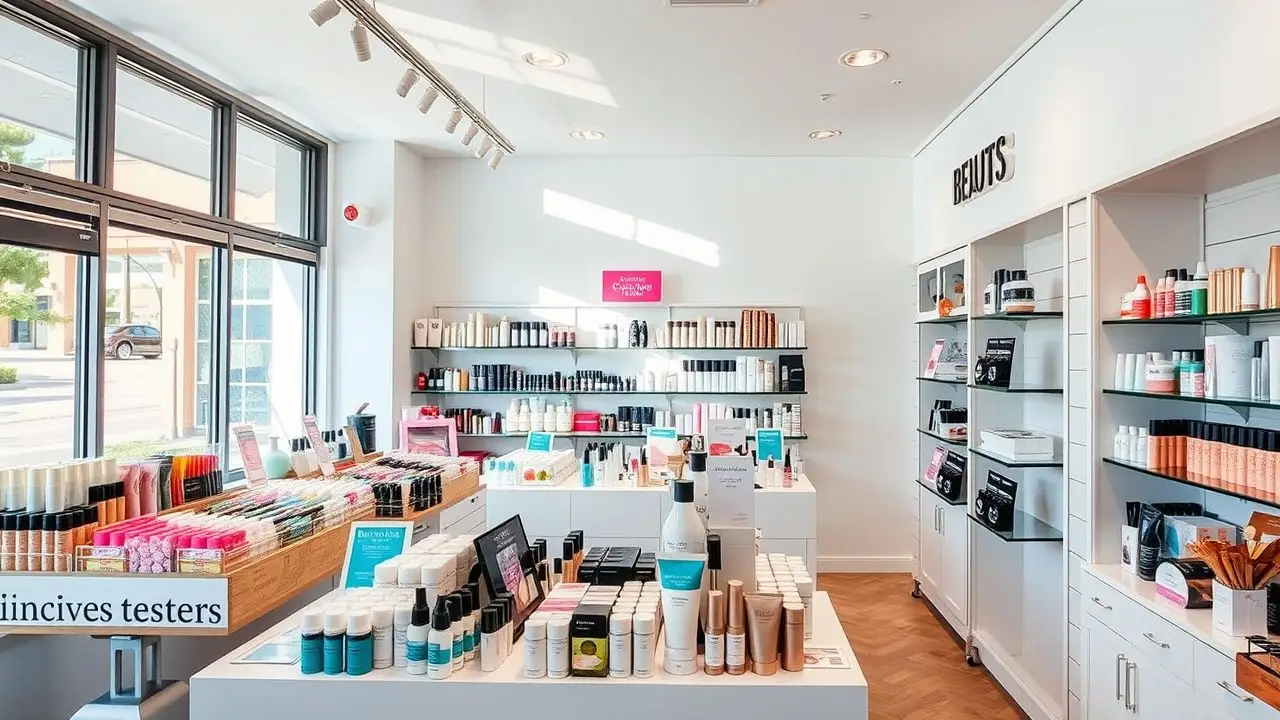
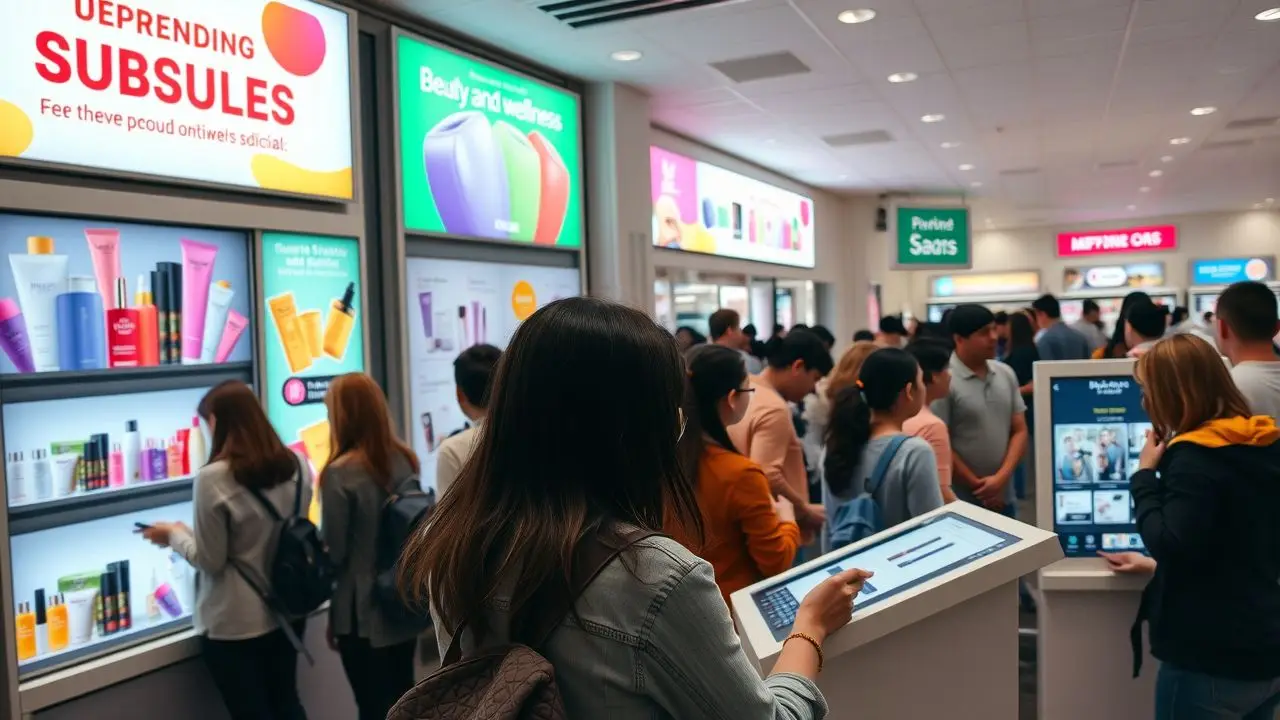
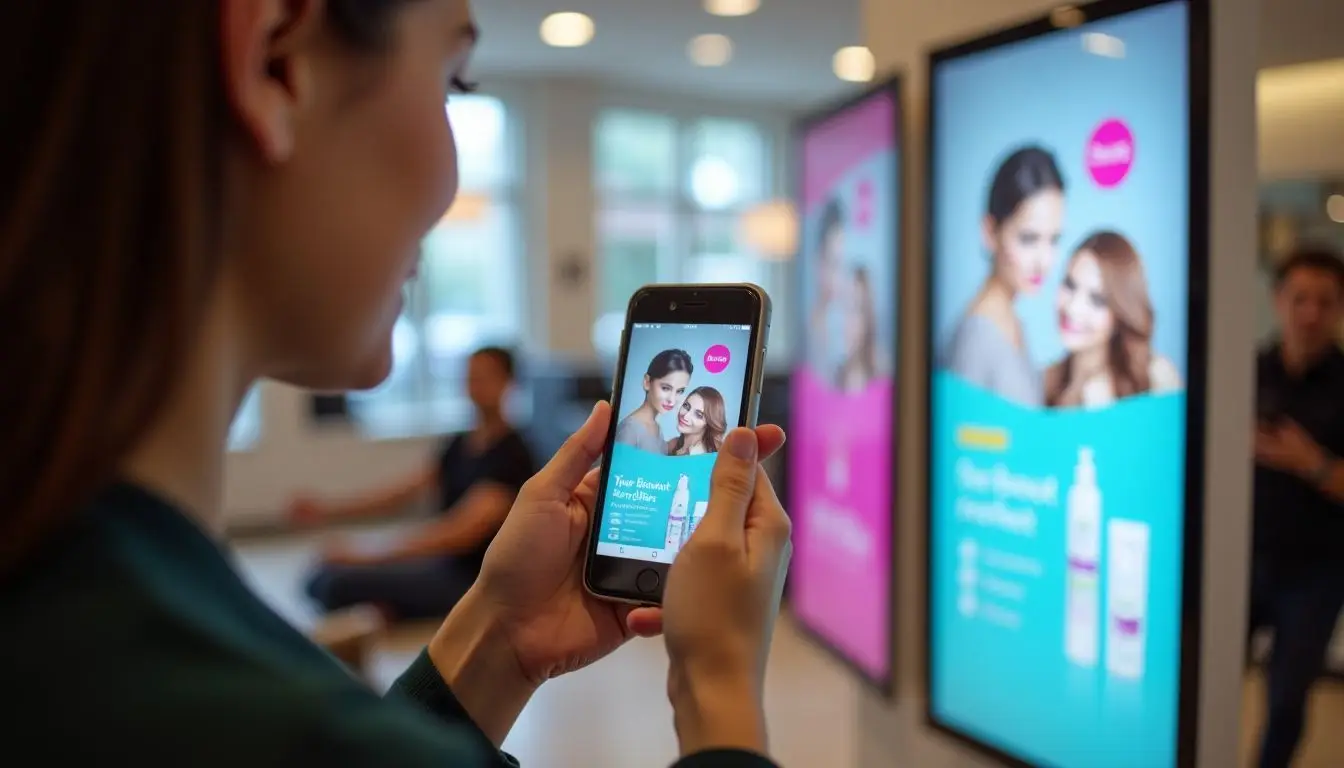 Personalized marketing is key in the beauty and wellness industry. It helps businesses connect better with customers. For instance, digital signage can show tailored product suggestions based on a customer’s past purchases.
Personalized marketing is key in the beauty and wellness industry. It helps businesses connect better with customers. For instance, digital signage can show tailored product suggestions based on a customer’s past purchases.